Top 35 Most Common Birds of Indiana – Ultimate Guide to Backyard & Wild Birds: Imagine sipping your morning coffee while watching a vibrant parade of songbirds dance across your Indiana backyard. There’s something magical about spotting a flash of red from a cardinal or hearing the nostalgic coo of a mourning dove. This ultimate guide takes you on a captivating journey through the Top 35 Most Common Birds of Indiana, offering insights into their habits, habitats, and how you can attract these beautiful creatures to your own slice of nature. Dive in and discover why so many bird enthusiasts are flocking to this treasured guide – your backyard will thank you!
Most common birds of Indiana
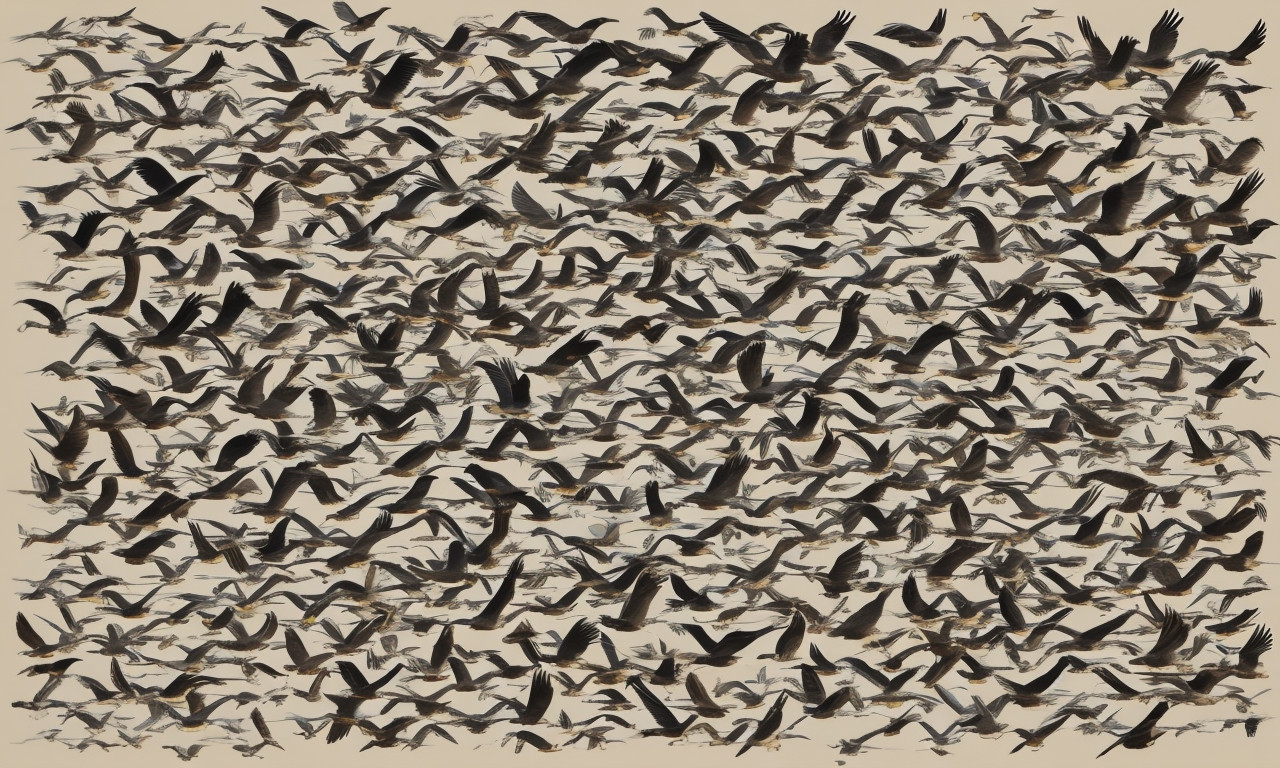
Indiana is home to a diverse array of avian species, making bird watching an immensely rewarding hobby throughout the state. This guide delves into the top 35 most common birds of Indiana that you might encounter in your backyard or while exploring wild habitats. From the vibrant Northern Cardinal, known for its striking red plumage, to the cheerful American Robin, easily recognizable by its orange breast, the Hoosier State hosts a wide variety of birds that captivate both amateur and seasoned birders alike.
The guide meticulously categorizes and describes each species, highlighting their unique features and behaviors. Whether it’s the melodic song of the Eastern Bluebird or the acrobatic flight of the Ruby-throated Hummingbird, you’ll learn about the habits and habitats of Indiana’s avian inhabitants. This comprehensive guide also offers practical tips on how to attract these birds to your backyard, including the types of feeders and birdhouses that are most appealing to them.
Understanding the characteristics of the most common birds of Indiana enriches your experience, whether you’re identifying a new species or hearing a familiar song. This guide is an essential resource for anyone passionate about birding in Indiana, providing insightful knowledge to enhance your bird-watching adventures.
Northern Cardinal
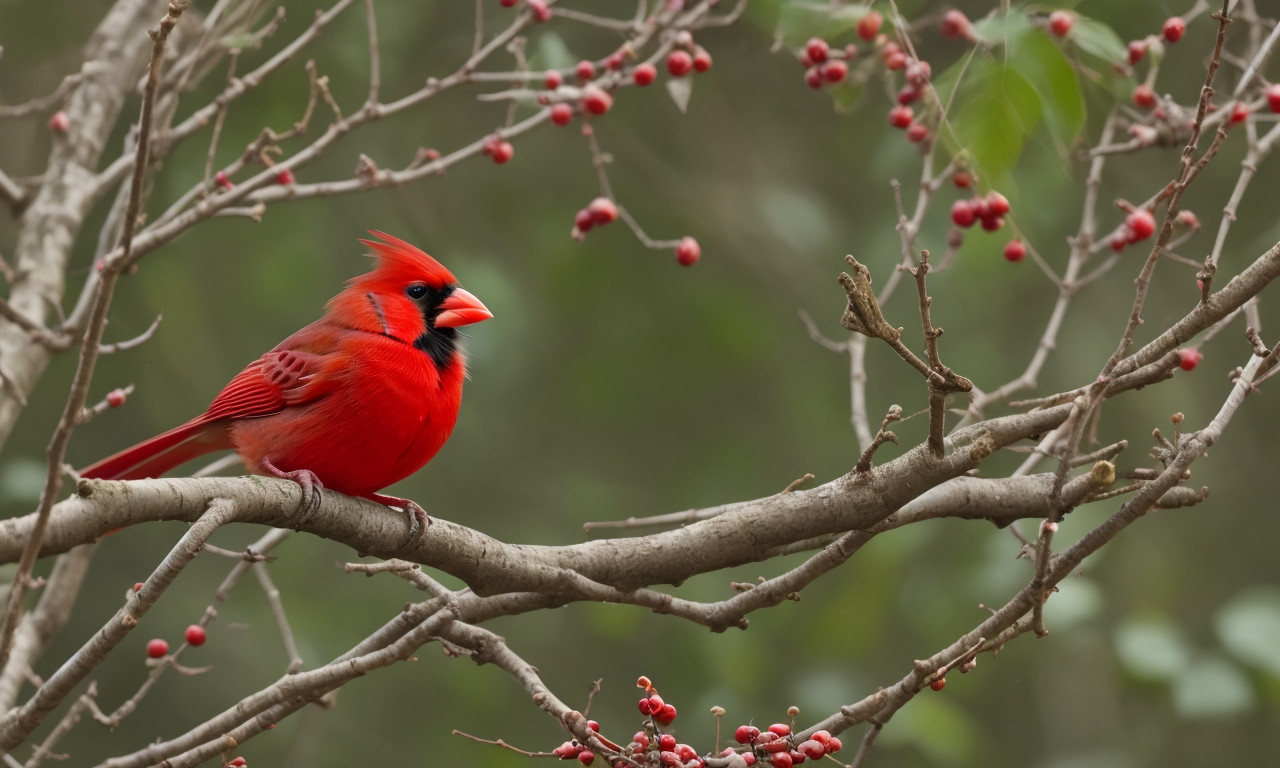
Indiana boasts a diverse avian population, with the Northern Cardinal reigning supreme among its backyard and wild habitats. This "Top 35 Most Common Birds of Indiana – Ultimate Guide to Backyard & Wild Birds" highlights the most frequently spotted birds, offering enthusiasts a comprehensive resource.
The Northern Cardinal, with its unmistakable vibrant red plumage and melodic songs, is a perennial favorite. Often seen perching on feeders or flitting through shrubbery, this bird draws attention with its striking appearance year-round, even during Indiana’s harsh winters. The male Northern Cardinal is particularly eye-catching, while the female’s subtler, tan coloring complements her companion’s brilliance.
The guide delves into behaviors, feeding habits, and nesting patterns of the Northern Cardinal, elucidating why it thrives in varied environments across Indiana. Whether nesting in dense thickets or visiting suburban feeders, the cardinal adapts remarkably well to both rural and urban settings. Its diet is varied—comprising seeds, fruits, and insects—making it a versatile forager.
Birdwatchers in Indiana will find the Northern Cardinal an engaging subject for observation and study. Its presence symbolizes vibrancy and resilience, epitomizing Indiana’s rich avian life. This guide ensures that both novice and experienced bird enthusiasts can appreciate the allure and significance of the Northern Cardinal amidst the state’s avifauna.
Blue Jay

Indiana’s diverse ecosystems make it a birdwatcher’s paradise, with various species gracing both backyard feeders and wild spaces. In our "Top 35 Most Common Birds of Indiana – Ultimate Guide to Backyard & Wild Birds," we delve into species that every enthusiast should know. Among these, the Blue Jay stands out as a particularly captivating bird.
Recognizable by their vibrant blue plumage and distinctive crests, Blue Jays are one of Indiana’s most common visitors. These intelligent birds are known for their complex social structures and varied diet, which includes insects, seeds, and fruits. Often spotted in wooded areas as well as suburban gardens, Blue Jays play a crucial role in seed dispersal, contributing to the growth of Indiana’s diverse flora.
Furthermore, Blue Jays are vocal creatures, often mimicking the calls of other birds. This behavior can serve as both a protective mechanism against predators and a way to communicate with their flock. The Blue Jay’s presence adds a splash of color and a symphony of calls to the Indiana landscape, making them a favorite among birdwatchers.
In our comprehensive guide, we explore not only the Blue Jay but also an array of other birds, offering tips on how to attract them and insights into their behavior. Whether you’re a seasoned birder or a curious newcomer, understanding the Blue Jay among Indiana’s common birds enriches your birdwatching experience.
American Robin
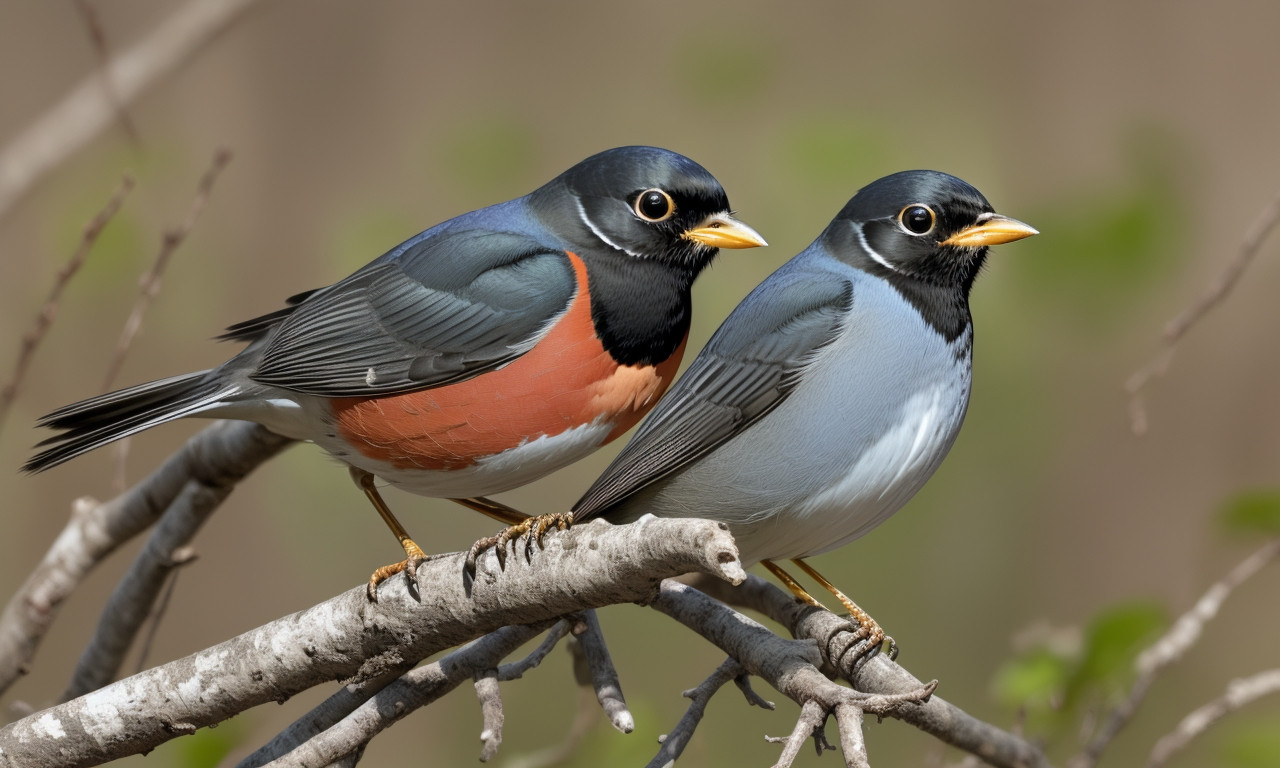
Indiana boasts a rich variety of bird species, with the American Robin standing out as one of the top 35 most common birds in the state. Easily recognized by its orange-red breast and cheerful song, the American Robin is a beloved sight in both backyards and wild areas throughout Indiana. This bird thrives in diverse habitats, nesting in trees, shrubs, and even on man-made structures. Its adaptability to urban, suburban, and rural environments makes it a frequent visitor to bird feeders, especially those offering fruit and worms.
The American Robin’s diet mainly consists of insects, berries, and earthworms, making them an essential player in controlling insect populations. During spring and summer, their melodious morning songs announce the arrival of warmer weather. In Indiana, these birds often stay year-round, although some may migrate short distances during extreme winter conditions. Their distinctive nests, made from grass, twigs, and mud, can often be spotted on the eaves of houses or high in trees.
Including the American Robin in an ultimate guide to Indiana’s birds highlights not only their prevalence but also their role in enriching the state’s natural beauty. Bird enthusiasts can easily attract these charming creatures by maintaining a bird-friendly environment with native plants and well-stocked feeders.
Mourning Dove
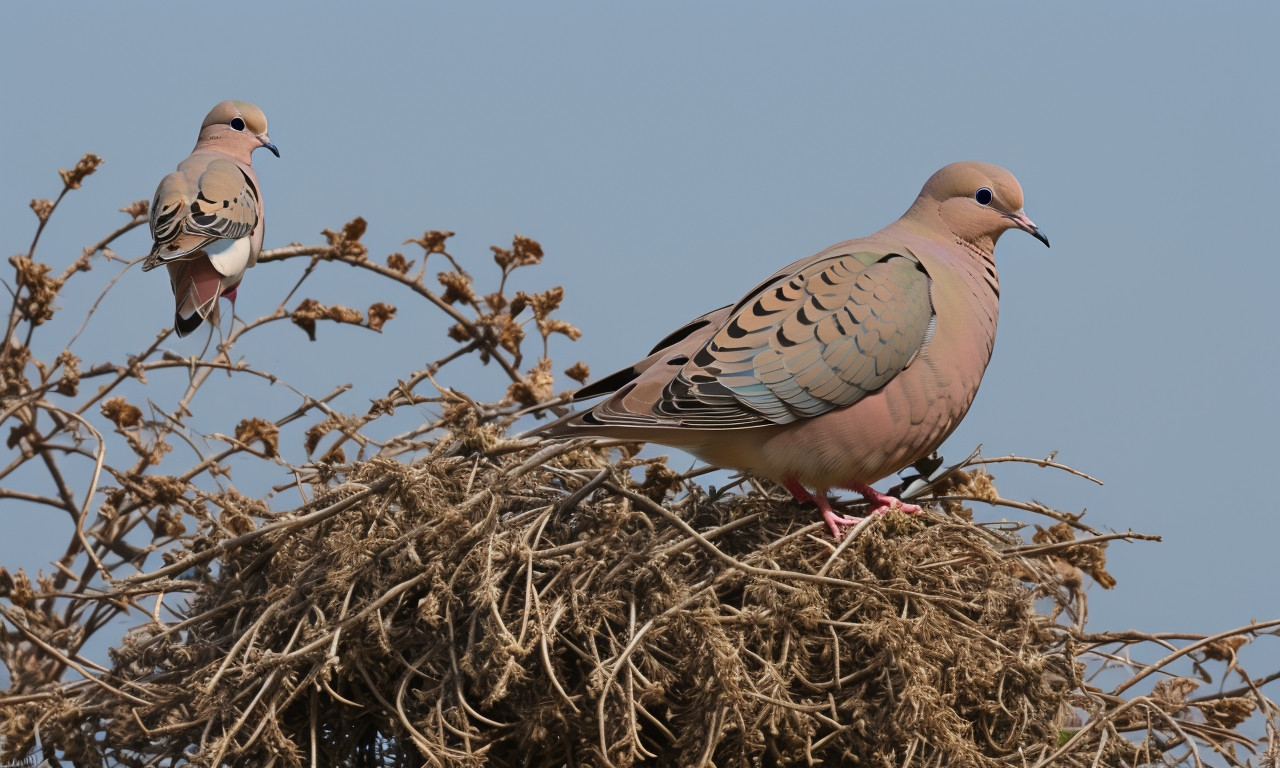
Indiana is a bird lover’s paradise, home to a diverse array of avian species. Among the Top 35 Most Common Birds of Indiana, the Mourning Dove stands out for its gentle demeanor and melodic cooing. This graceful bird, characterized by its slender body, muted gray-brown plumage, and distinctive black spots on the wings, is a frequent visitor to both urban backyards and rural landscapes.
Mourning Doves are easily recognized by their soft, drawn-out calls that evoke a sense of tranquility, making them a beloved sight and sound in Indiana. These birds typically forage on the ground, searching for seeds and grains, often favoring areas where food is plentiful.
Their adaptability to different environments contributes to their widespread presence across the state. Whether you are in a bustling city or a quiet countryside, spotting a Mourning Dove is a common and delightful experience. They often nest in trees or shrubs, making minimalistic nests of twigs and grasses.
Understanding the habits and characteristics of the Mourning Dove enriches the bird-watching experience, offering insight into the behaviors of one of Indiana’s most cherished birds. For enthusiasts aiming to explore the avian diversity of Indiana, the Mourning Dove serves as a delightful introduction to the state’s vibrant bird life.
Downy Woodpecker
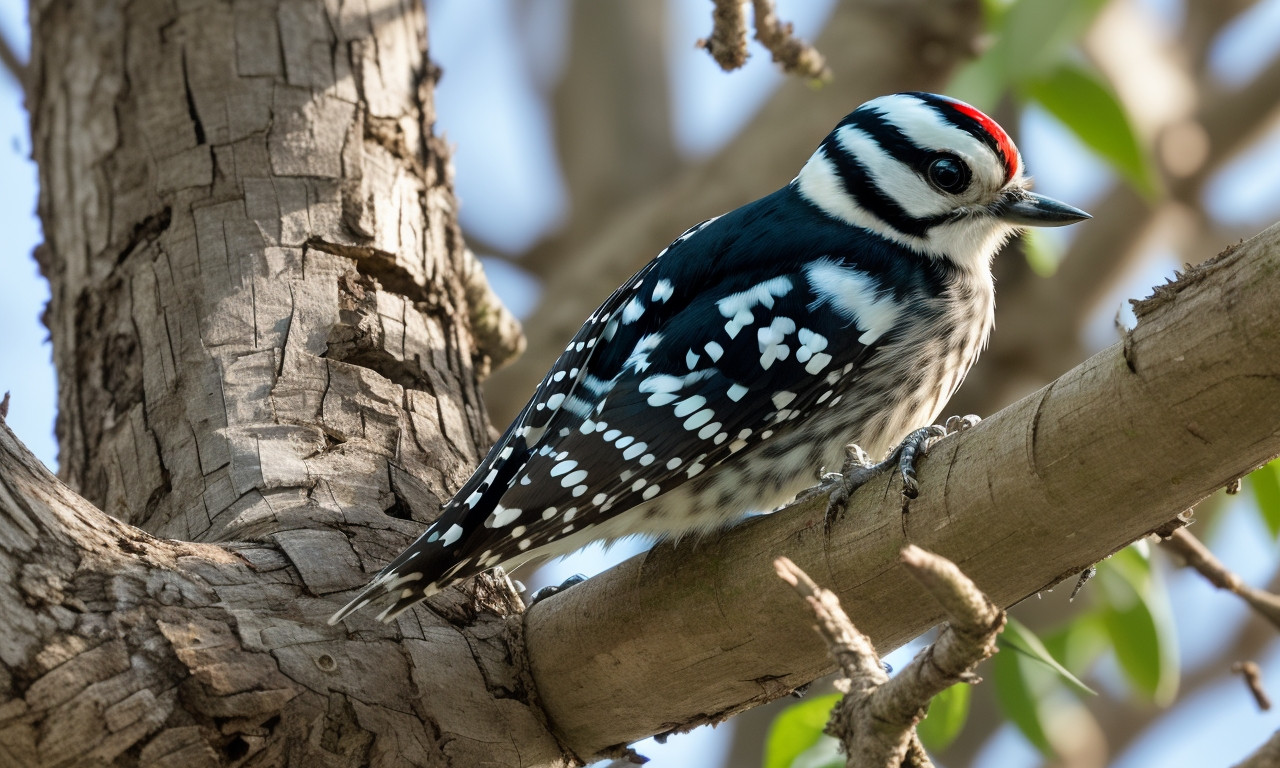
Indiana is a haven for bird enthusiasts, offering a rich tapestry of avian species that grace its skies and landscapes. Among the top 35 most common birds of Indiana, one that frequently catches the eye is the Downy Woodpecker. This small yet striking bird is a regular visitor to both backyards and wild areas, making it a familiar sight to Indiana’s bird watchers. The Downy Woodpecker, distinguished by its black and white plumage and a characteristic tuft of red on the males’ heads, is adept at foraging for insects on tree bark, lending a rhythmic tapping sound that often signals its presence.
This guide explores not only the Downy Woodpecker but also delves into the habitats, behaviors, and identifying features of the other common birds of Indiana. From the vibrant Northern Cardinal to the melodious American Robin, each species is presented with detailed descriptions and practical tips to enhance your bird-watching experience. Whether you are a novice birder or an experienced ornithologist, understanding the diversity of Indiana’s bird population, including the ubiquitous Downy Woodpecker, enriches your connection to nature and adds depth to every outdoor adventure. This comprehensive guide serves as an essential resource for those eager to explore the bustling avian life of Indiana.
Red-bellied Woodpecker
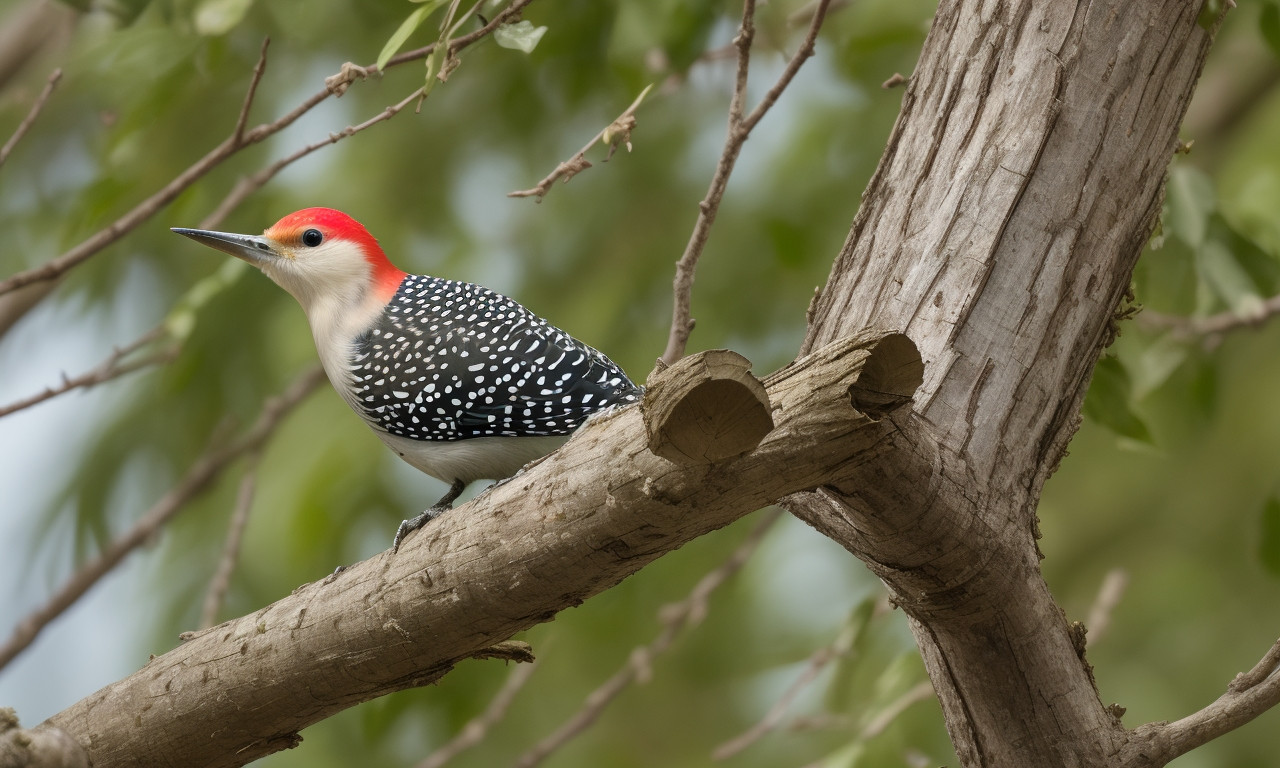
Indiana’s diverse landscapes make it a haven for birdwatchers, and this guide highlights the top 35 most common birds you can encounter, both in backyards and in the wild. Among these fascinating creatures, the Red-bellied Woodpecker stands out as a quintessential member of Indiana’s avian community. Easily identified by its striking black-and-white barred back and the subtle red tint on its belly, this bird is a frequent visitor to feeders, particularly those offering suet and sunflower seeds.
The Red-bellied Woodpecker is a highly adaptable bird, found in forests, woodlands, and suburbs alike. Its loud call and drumming sounds are often the first hint of its presence. These woodpeckers play an important ecological role by controlling insect populations and aiding in the decomposition of dead trees, which provides nesting sites for other species. Notably, their strong bills allow them to excavate for insects hiding beneath tree bark, making them superb foragers.
While focusing on the Red-bellied Woodpecker, the guide also explores the behaviors, habitats, and identifying features of other common birds in Indiana. By understanding these details, birdwatchers can enhance their knowledge and appreciation of the vibrant bird life flourishing in the state. Whether you’re an experienced birder or just starting out, this comprehensive guide serves as an indispensable resource.
Tufted Titmouse

Indiana’s diverse habitats are home to an array of fascinating avian species, making it a paradise for bird watchers. Among the Top 35 Most Common Birds of Indiana, the Tufted Titmouse stands out with its distinctive appearance and behaviors. This small, gray bird is easily recognized by its striking black eyes, intelligent expression, and prominent crest.
The Tufted Titmouse is a frequent visitor to backyard feeders, where it eagerly consumes sunflower seeds, peanuts, and suet. It is a curious bird, often found flitting among the branches and calling with its cheerful "peter-peter-peter" song. Apart from feeders, these birds are plentiful in the forests and woodlands across Indiana, showcasing their versatile adaptability.
In the ultimate guide to backyard and wild birds of Indiana, understanding the habits and preferences of the Tufted Titmouse can enhance any birdwatching experience. This guide offers insights into the breeding, nesting, and feeding patterns of these common yet intriguing birds. By tuning into their sounds and observing their behaviors, bird enthusiasts can better appreciate the rich avian life Indiana boasts.
Overall, the Tufted Titmouse serves as a delightful representation of the avian beauty and biodiversity found within Indiana, making it an essential highlight in any comprehensive birdwatching guide.
American Goldfinch

The "Top 35 Most Common Birds of Indiana – Ultimate Guide to Backyard & Wild Birds" is an essential resource for bird enthusiasts. This comprehensive guide highlights a fascinating array of avian species that grace Indiana’s skies, fields, and backyards. Among the notable entries is the American Goldfinch, a striking bird celebrated for its vibrant yellow plumage and rhythmic flight.
The American Goldfinch is a small, cheerful songbird that often draws attention with its undulating, buoyant flight and melodious calls. Predominantly found in weedy fields, gardens, and suburban areas, these birds are particularly fond of sunflower and thistle seeds. Their adaptability makes them frequent visitors to backyard feeders, especially during late summer and early fall when they are most actively foraging.
The guide delves into the seasonal presence of the American Goldfinch in Indiana, elucidating their unique breeding behavior, where they delay nesting until mid-summer to ensure abundant food for their young. It also provides tips on how to attract and support these birds by planting native thistles and sunflowers. With vivid illustrations and detailed descriptions, this guide not only educates about the American Goldfinch but also inspires conservation efforts to maintain the diverse birdlife of Indiana, making it an invaluable tool for both novice and seasoned birdwatchers.
American Crow
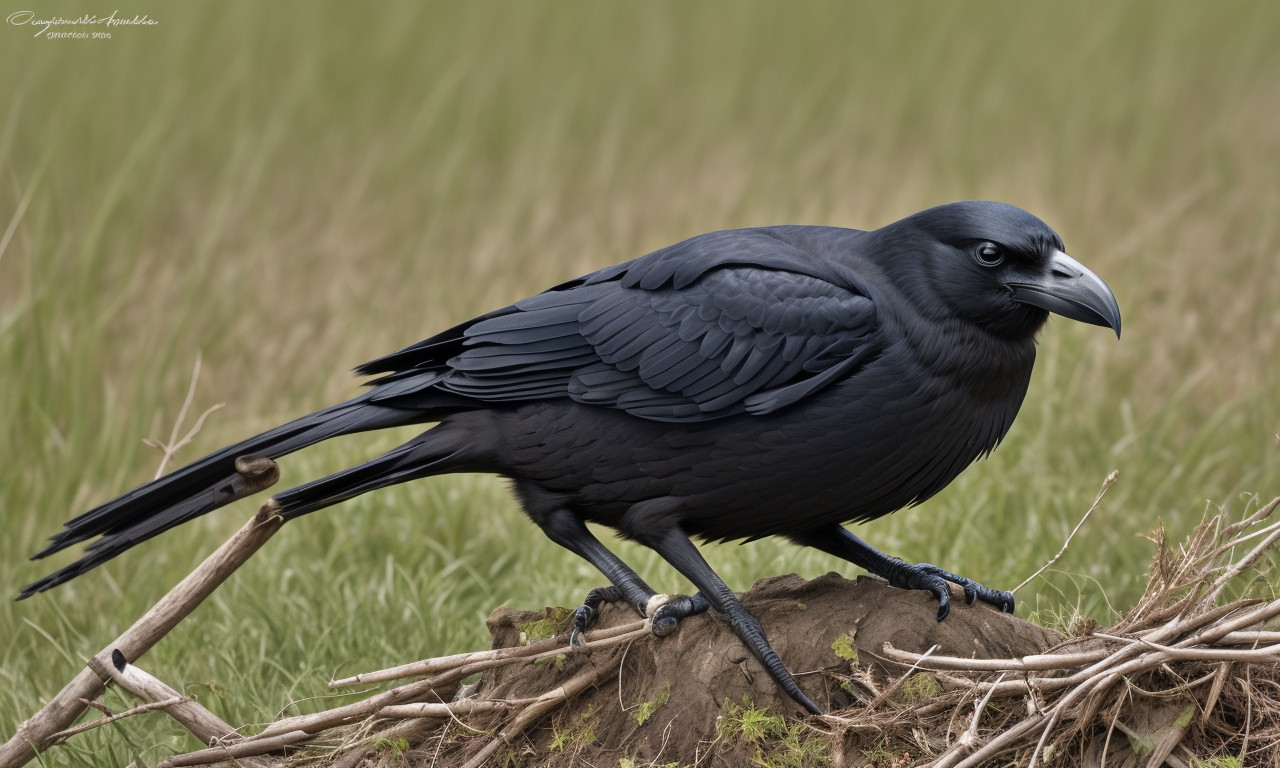
Indiana’s rich avian diversity makes it a prime spot for bird enthusiasts. This guide meticulously details the top 35 most common birds found in the state, both in backyards and wild habitats. One bird that often garners attention is the American Crow. Adaptable and intelligent, the American Crow is a signature species in Indiana’s birding landscape. These birds are known for their glossy black feathers and distinctive cawing, often seen in large, noisy groups. In the urban settings of Indiana, they are a common sight, frequenting parks, fields, and even suburban backyards. Their omnivorous diet makes them versatile scavengers, contributing significantly to the ecosystem by helping in waste cleanup. The guide delves into the fascinating behaviors and characteristics of the American Crow, among other birds, providing tips on how to identify them, their nesting habits, and the best times and places for spotting them. Each bird species in this guide is accompanied by detailed descriptions, vivid photographs, and interesting trivia, making it a comprehensive resource for both novice and seasoned bird watchers in Indiana. Discover the beauty and wonder of Indiana’s avian inhabitants with this ultimate guide!
White-breasted Nuthatch
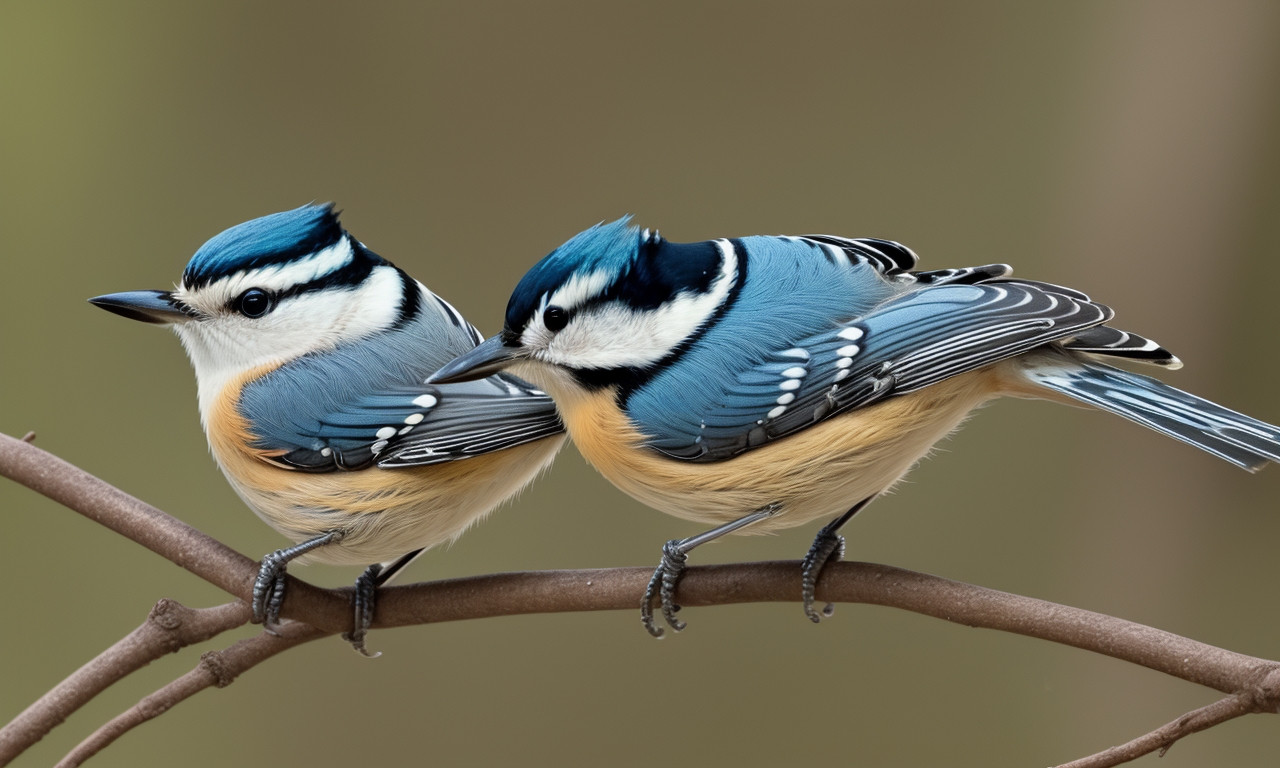
The "Top 35 Most Common Birds of Indiana – Ultimate Guide to Backyard & Wild Birds" is your essential resource for identifying and appreciating the vibrant avian life in Indiana. Among the notable feathered residents, the White-breasted Nuthatch stands out for its unique characteristics and behaviors. This guide offers detailed profiles on each bird, with a special highlight on the White-breasted Nuthatch. Known for its distinctive blue-gray upperparts, white undersides, and black cap, this small bird is a frequent visitor to backyards, providing endless entertainment with its energetic movements.
The White-breasted Nuthatch is particularly fascinating because of its unusual ability to climb down trees headfirst, a behavior not commonly observed in other bird species. This comprehensive guide also explores the habitats, feeding habits, and birdwatching tips to help you attract these delightful creatures to your garden. Whether you’re an avid birdwatcher or a nature enthusiast, understanding the White-breasted Nuthatch and other common Indiana birds will deepen your appreciation for the state’s natural beauty. Dive into this ultimate guide to enhance your birdwatching adventures and create a haven for wild birds right in your backyard. Whether you’re in urban areas or exploring state parks, this guide is your companion in discovering Indiana’s common birds.
Song Sparrow
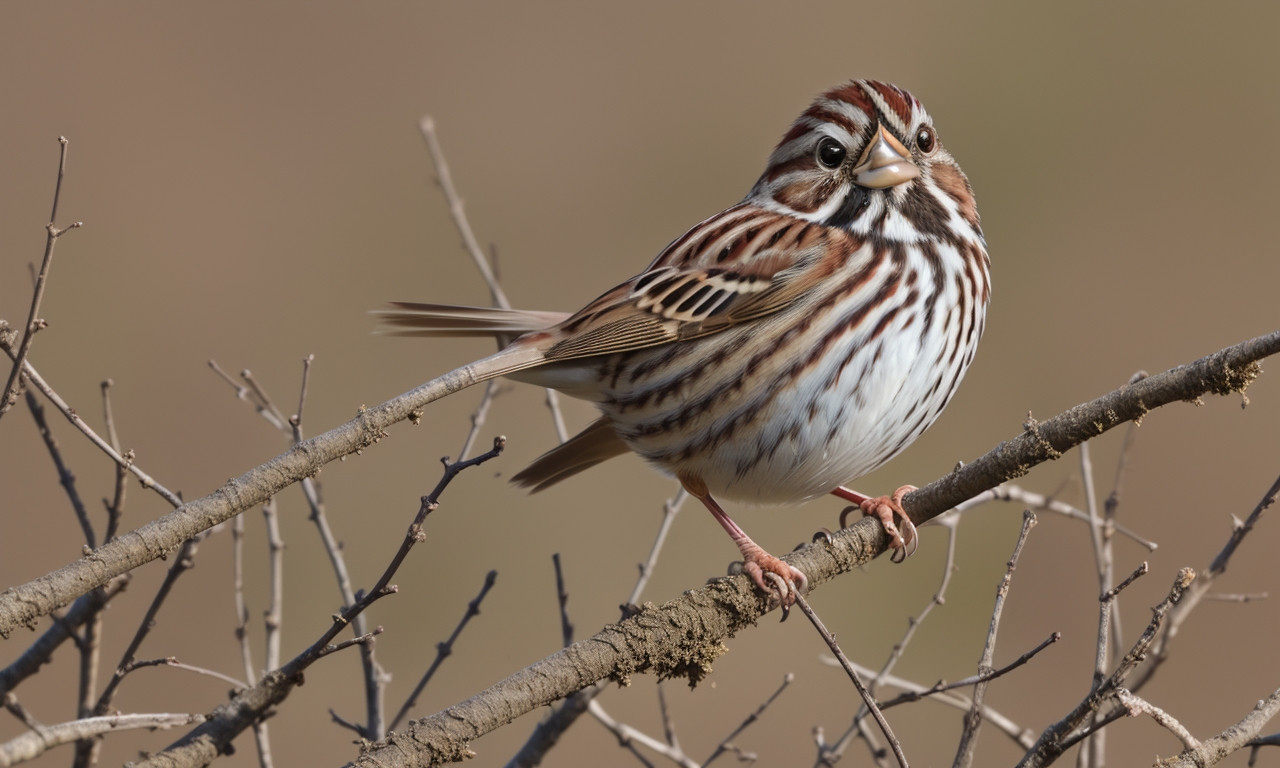
Indiana boasts a rich diversity of avian life, making it a paradise for bird enthusiasts. The "Top 35 Most Common Birds of Indiana – Ultimate Guide to Backyard & Wild Birds" offers a comprehensive exploration of these feathered wonders. Among the myriad species, the Song Sparrow stands out for its melodious tunes and distinctive features.
Commonly found across Indiana, the Song Sparrow brings a lyrical charm to both rural and urban settings. Recognizable by its streaked breast and rust-colored cap, this small bird thrives in various habitats, from marshes and fields to backyards. Its adaptability makes it one of the most frequently spotted birds in the state.
The Song Sparrow’s song is a key identifier, consisting of a mix of clear notes and trills that vary regionally. Males often sing to establish territory and attract mates, adding a beautiful soundtrack to Indiana’s natural surroundings.
In this ultimate guide, the Song Sparrow exemplifies the diversity and beauty of Indiana’s avifauna. Whether you are an avid birder or a casual observer, understanding the habits and characteristics of the Song Sparrow enhances your appreciation of these delightful creatures. Engaging with such an exhaustive guide allows you to recognize and cherish the avian wonders gracing Indiana’s skies and treetops.
Carolina Chickadee
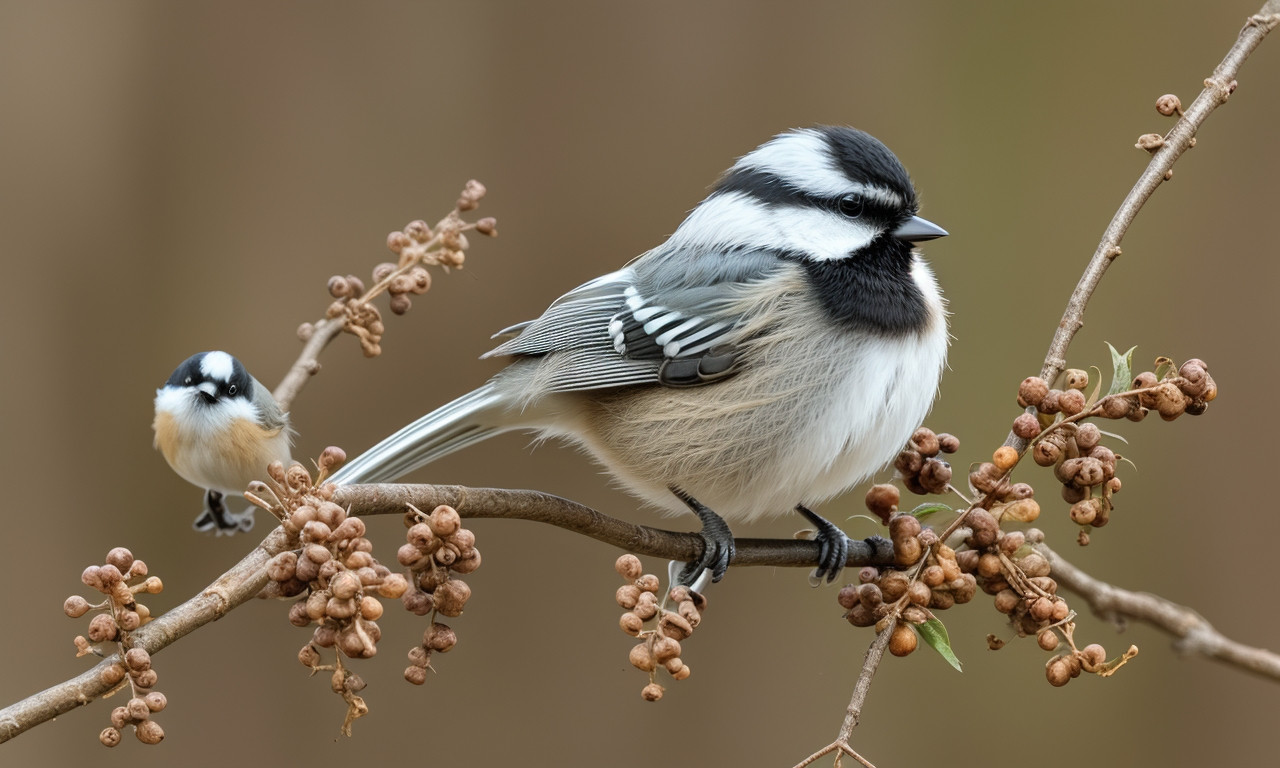
Indiana is a bird watcher’s paradise, teeming with an array of avian species that bring life to both backyards and wild habitats. In the "Top 35 Most Common Birds of Indiana – Ultimate Guide to Backyard & Wild Birds," one can discover the bustling, vibrant world of Indiana’s feathered inhabitants. Among these birds, the Carolina Chickadee stands out as a particularly delightful resident. Known for its characteristic black cap and bib, this small songbird packs a lot of charm into its tiny frame. The Carolina Chickadee is highly adaptable, often found flitting from branch to branch in mixed woods, backyards, and even urban areas, making it a regular sight for Indiana bird enthusiasts.
Recognized by their distinctive "chick-a-dee-dee-dee" call, Carolina Chickadees are also industrious nesters. They prefer cavities in trees, sometimes using old woodpecker holes or birdhouses put up by humans. During colder months, it is not uncommon to spot them visiting feeders, favoring sunflower seeds and suet. Observing a Carolina Chickadee in its bustling daily life offers a glimpse into the delicate yet resilient nature of Indiana’s avian population. Whether you’re a novice or an expert birder, understanding the habits and habitats of the Carolina Chickadee adds a rewarding depth to any bird-watching experience in Indiana.
House Finch
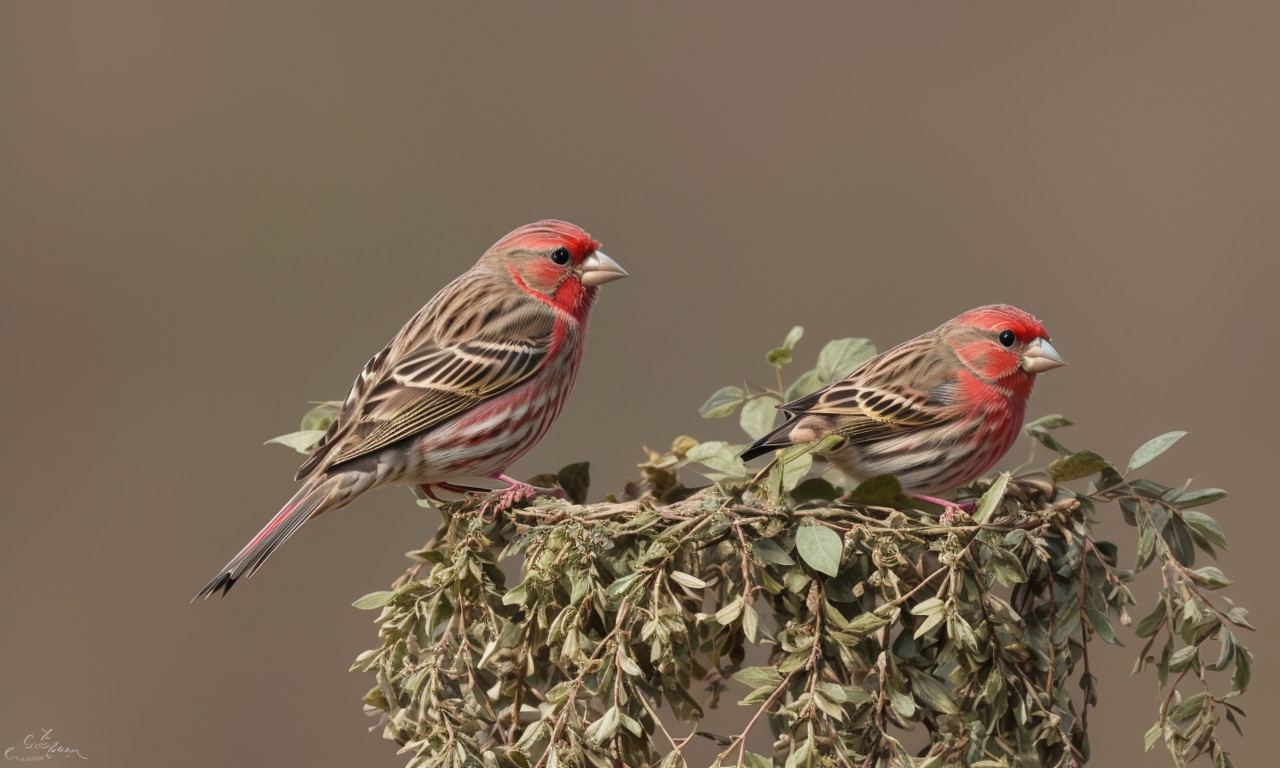
Indiana is home to an incredible array of bird species, making it a haven for bird enthusiasts and nature lovers alike. Among the top 35 most common birds of Indiana featured in our ultimate guide, the House Finch stands out as a particularly captivating sight. This charming bird, instantly recognizable by its vibrant red plumage in males and streaked brown feathers in females, often frequents backyards and urban settings alike. The House Finch is a social creature, typically spotted in small flocks, filling the air with their cheerful, warbling song.
These adaptable birds thrive in various environments, from wooded areas to suburban gardens, often nesting in trees, bushes, or even man-made structures. Birdwatchers in Indiana can attract House Finches by offering feeders filled with sunflower seeds, a favorite treat for these finches. Their presence is not just a delight for the eyes but also an indication of a healthy, balanced ecosystem.
Observing the House Finch can provide valuable insights into the broader avian community of Indiana, as they often share habitats with other common species like the American Robin and Northern Cardinal. Whether you’re new to birdwatching or a seasoned enthusiast, the House Finch offers a perfect introduction to the diverse birdlife that Indiana proudly hosts.
House Sparrow

Indiana is a haven for bird enthusiasts, teeming with diverse avian species. The "Top 35 Most Common Birds of Indiana – Ultimate Guide to Backyard & Wild Birds" offers a comprehensive look at the state’s feathered inhabitants. One standout species featured is the House Sparrow, a ubiquitous yet fascinating bird. Often seen flitting around suburban yards and bustling city streets, the House Sparrow captivates with its lively behavior and adaptability.
Originally native to Eurasia, the House Sparrow has become a prominent resident across Indiana, occupying urban, suburban, and rural landscapes alike. This resilient bird thrives in areas closely associated with human activity, making it a regular visitor to backyard feeders and birdbaths. Male House Sparrows are easily recognizable by their distinct black bibs, white cheeks, and rich brown plumage streaked with black. Females and juveniles, although less vividly marked, possess a subtle charm with their softer, earth-toned feathers.
Understanding the habits and characteristics of the House Sparrow is crucial for any birdwatcher aiming to maximize their birding experience in Indiana. This guide provides detailed insights on how to identify, attract, and appreciate this common yet intriguing species. By fostering a deeper connection with the House Sparrow, bird enthusiasts can enhance their appreciation of Indiana’s avian diversity, one bird at a time.
European Starling
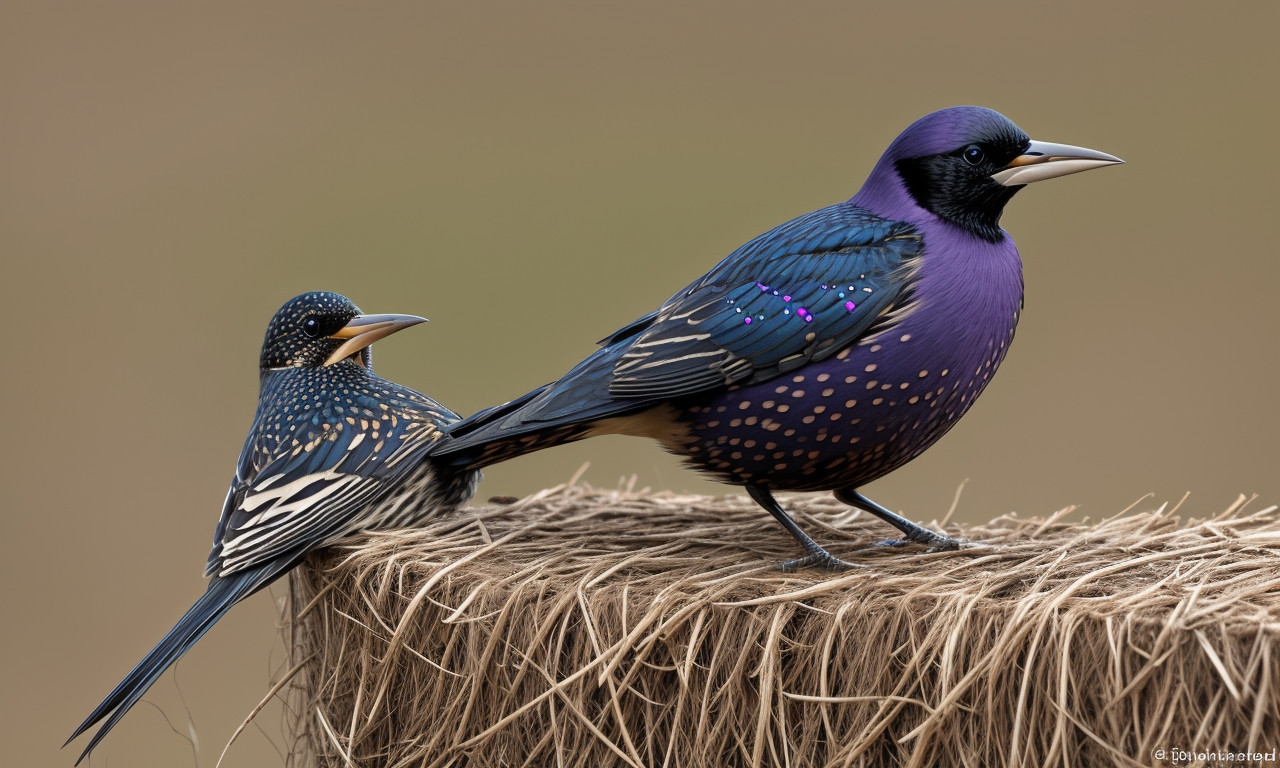
Indiana’s diverse landscape is home to a remarkable variety of bird species, making it a thrilling destination for birdwatchers. Among the top 35 most common birds found in Indiana, the European Starling stands out. Originally introduced from Europe, this bird has successfully adapted to various habitats across the state.
The European Starling is easily recognizable with its glossy black feathers speckled with white, especially during winter months. These birds are known for their impressive mimicry skills, often mimicking the calls of other bird species and even mechanical noises. They are found in both rural and urban areas, frequenting backyards, parks, and open fields. Their adaptability allows them to thrive in multiple settings, from bustling cities to serene countryside.
European Starlings are also known for their communal roosting behavior, forming large flocks that create mesmerizing murmurations in the sky. This social behavior plays a crucial role in their survival, as they forage together and protect each other from predators.
In your backyard, you might see European Starlings foraging on the ground, rummaging through leaf litter, and searching for insects. Providing bird feeders with a mix of seeds can attract these birds, allowing you to observe their fascinating behavior up close. Understanding the role of the European Starling in Indiana’s ecosystem offers a deeper appreciation for the state’s avian diversity.
Canada Goose
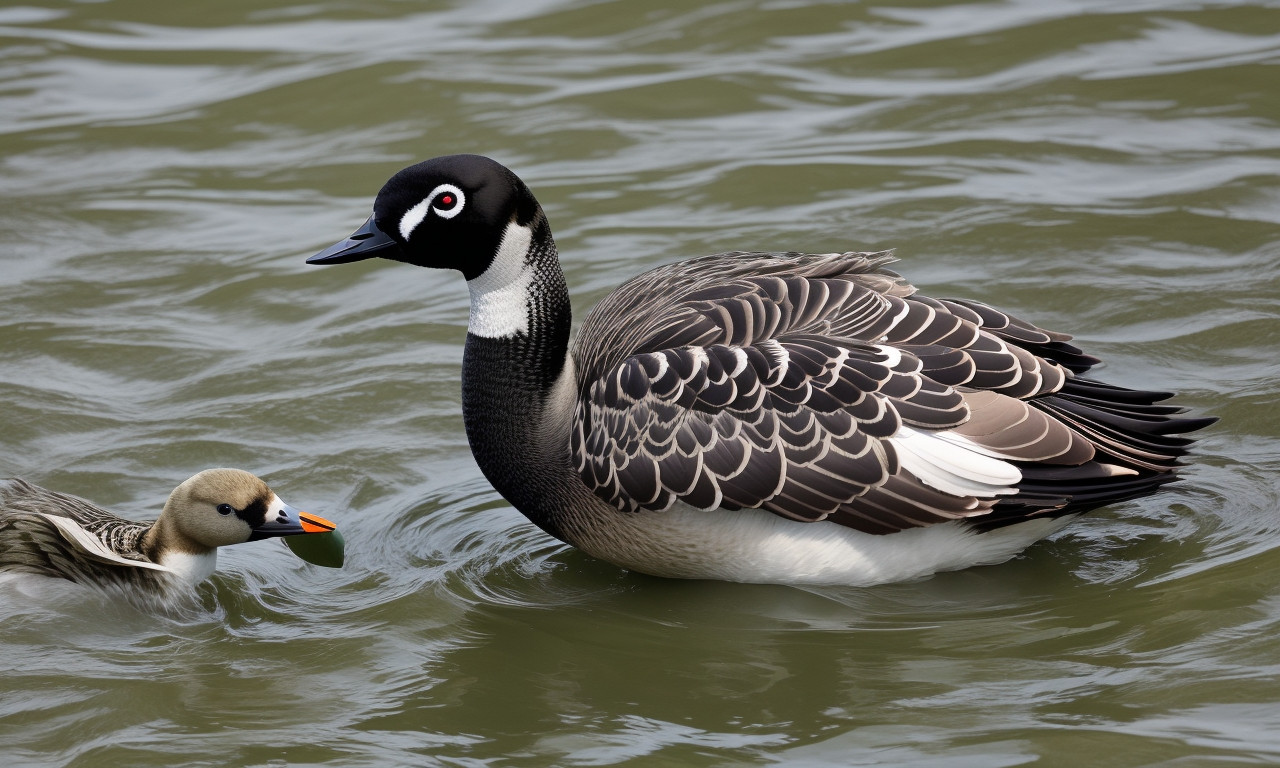
Indiana’s diverse landscapes provide a haven for bird enthusiasts, offering opportunities to observe a myriad of avian species. "Top 35 Most Common Birds of Indiana – Ultimate Guide to Backyard & Wild Birds" celebrates this rich avifauna, highlighting the state’s top bird sightings. Among these fascinating species, the Canada Goose stands out, both in numbers and its striking presence.
Canada Geese are frequently seen gracing Indiana’s skies, lakes, and parks. Known for their distinctive V-formation flight, these birds exhibit strong social behavior and are easily identifiable by their black head and neck, which contrast sharply with their white cheek patches. These adaptable birds thrive in various habitats, from rural farmlands to urban ponds, making them one of the most recognizable species in Indiana.
Observing their migratory patterns, the guide delves into the migratory habits and nesting behaviors of Canada Geese, providing insights on how they navigate through Indiana’s cooler months. With this ultimate guide, bird watchers can enhance their understanding of the Canada Geese population, learning about their feeding practices, vocalizations, and crucial role in the ecosystem.
Whether you are in a bustling city park or a serene country field, keeping an eye out for Canada Geese enriches the bird-watching experience, cementing their place among Indiana’s top 35 most common birds.
Red-winged Blackbird

Indiana’s bird enthusiasts will find the "Ultimate Guide to Backyard & Wild Birds" an invaluable resource, especially when exploring the top 35 most common birds in the state. Among these fascinating avian species, the Red-winged Blackbird stands out with its striking appearance and distinctive song. Marked by the males’ bold red and yellow shoulder patches, these birds are often seen perched on cattails or flitting across open fields and wetlands.
Primarily inhabiting marshy areas, the Red-winged Blackbird thrives in Indiana’s diverse ecosystems. They are known for their territorial behavior during the breeding season, where males aggressively defend their chosen spots. Their conk-la-ree song is a signature sound of spring and summer, signaling their presence to both potential mates and rivals.
The diet of the Red-winged Blackbird is varied, comprising insects, seeds, and grains, making them adaptable to both natural habitats and suburban feeders. Observing these birds can provide insight into the health of wetland environments, as they are often indicators of ecological balance.
Whether you’re a seasoned birdwatcher or a curious newcomer, recognizing and understanding the behaviors and habitats of the Red-winged Blackbird enhances the appreciation of Indiana’s rich bird life. The guide offers detailed descriptions, ensuring that each bird encounter is both educational and enjoyable.
Carolina Wren
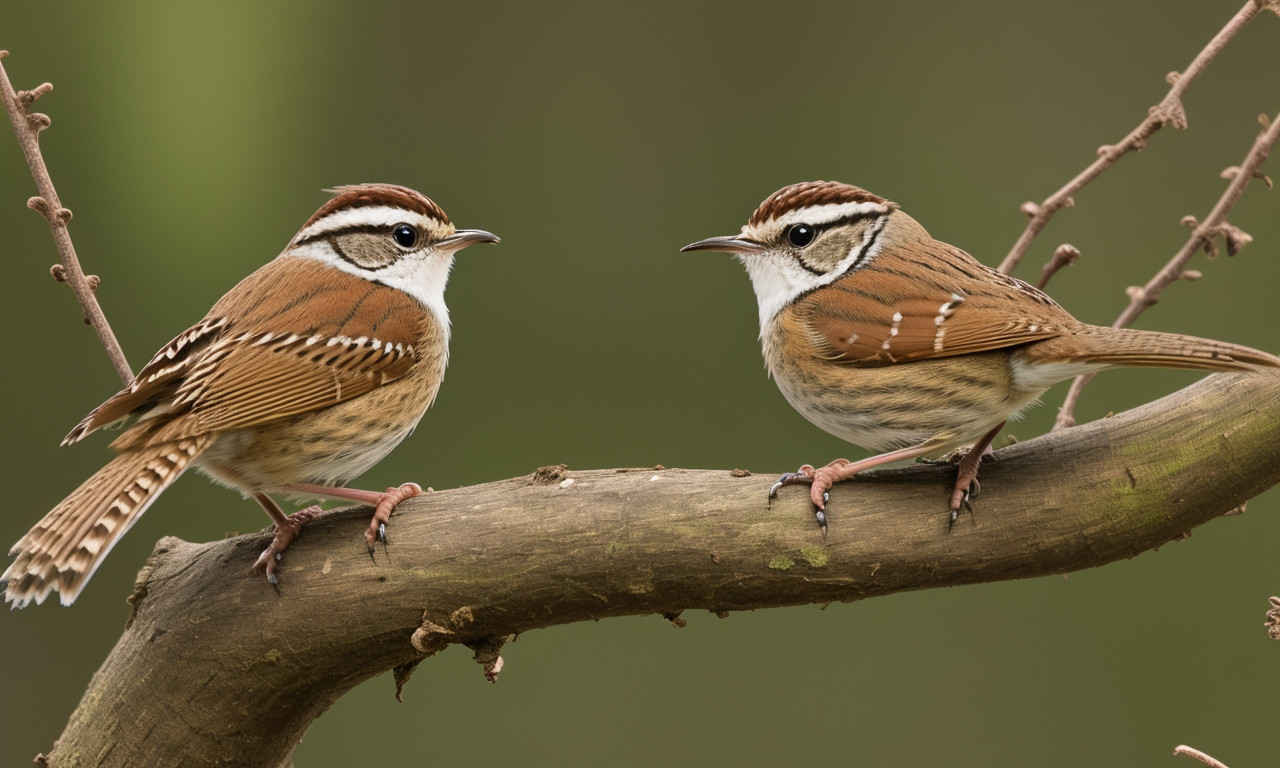
Among the rich and diverse avian population of Indiana, the Carolina Wren stands out as one of the most enchanting and common backyard birds. Noted for its vibrant cinnamon-colored plumage and distinct, resonant song, the Carolina Wren can often be spotted flitting around gardens, forests, and even urban yards. This small but spirited bird is an integral part of the Top 35 Most Common Birds of Indiana, a comprehensive guide that offers invaluable insights into the avifauna of the region.
The Carolina Wren favors environments with thick vegetation, which provides both shelter and an abundant food supply, consisting mainly of insects and small fruits. These resourceful birds are known for their inquisitive nature and the characteristic way they flick their tails upward. They are also year-round residents, contributing consistently to Indiana’s vibrant birdwatching scene.
Our ultimate guide aims to provide bird enthusiasts with a detailed understanding of how to identify and appreciate these common birds in their natural habitats. Understanding the habits and habitats of the Carolina Wren not only enhances your birdwatching experience but also fosters a deeper connection with Indiana’s natural beauty. Whether you are setting up feeders or planting shrubbery, encouraging the presence of the Carolina Wren can transform your backyard into a lively bird haven.
Mallard

Indiana is a birdwatcher’s paradise, home to a vibrant array of avian species. Among the top 35 most common birds you’ll encounter in this Midwestern state is the Mallard. Recognizable by its striking green head and yellow bill, the Mallard thrives in both backyard settings and wild habitats.
Mallards are dabbling ducks, meaning they feed mainly on the water’s surface rather than diving for food. Their adaptable nature allows them to inhabit various environments, from small suburban ponds to expansive wetlands. During the breeding season, you’ll often spot Mallard pairs, as they are monogamous through this period. The female Mallard, camouflaged in mottled brown plumage, produces a clutch of about 8-13 eggs, diligently tending to them until they hatch.
Adding a fascinating touch to their behavior, Mallards are known to form "eclipse plumage" after breeding, where males temporarily lose their vibrant coloring. This change renders them less visible to predators, demonstrating nature’s ingenious methods of protection.
The Mallard’s remarkable adaptability and beautiful appearance contribute to its prominence in Indiana’s avifauna. Whether you’re a seasoned birder or a curious beginner, spotting a Mallard can be both an entry point into birding and a highlight of your bird-watching adventures in Indiana. Keep an eye out for these charming ducks on your next outing to truly appreciate one of the state’s most common and captivating birds.
Turkey Vulture

In the picturesque landscapes of Indiana, bird enthusiasts can spot a variety of avian species. Among the top 35 most common birds featured in this ultimate guide, the Turkey Vulture holds a notable place. These birds, often seen soaring gracefully in the sky, are an integral part of Indiana’s ecosystem. The Turkey Vulture is easily recognizable by its large blackish-brown body, bald red head, and broad wings. With a wingspan reaching up to 6 feet, these formidable fliers are often seen riding thermals, taking advantage of rising warm air to conserve energy during flight.
Known for their keen sense of smell, Turkey Vultures can sniff out carrion from great distances, playing a crucial role in nature’s cleanup crew by keeping the environment free of dead animal matter. Their distinctive habit of circling high above in search of food is a common sight for Indiana’s residents and visitors alike. This guide not only helps birdwatchers identify the Turkey Vulture but also provides insightful details about their behavior, habitat preferences, and significance within the diverse avian community of Indiana. From backyard sightings to wild encounters, the Turkey Vulture exemplifies the fascinating array of birdlife flourishing in the Hoosier State.
Northern Flicker
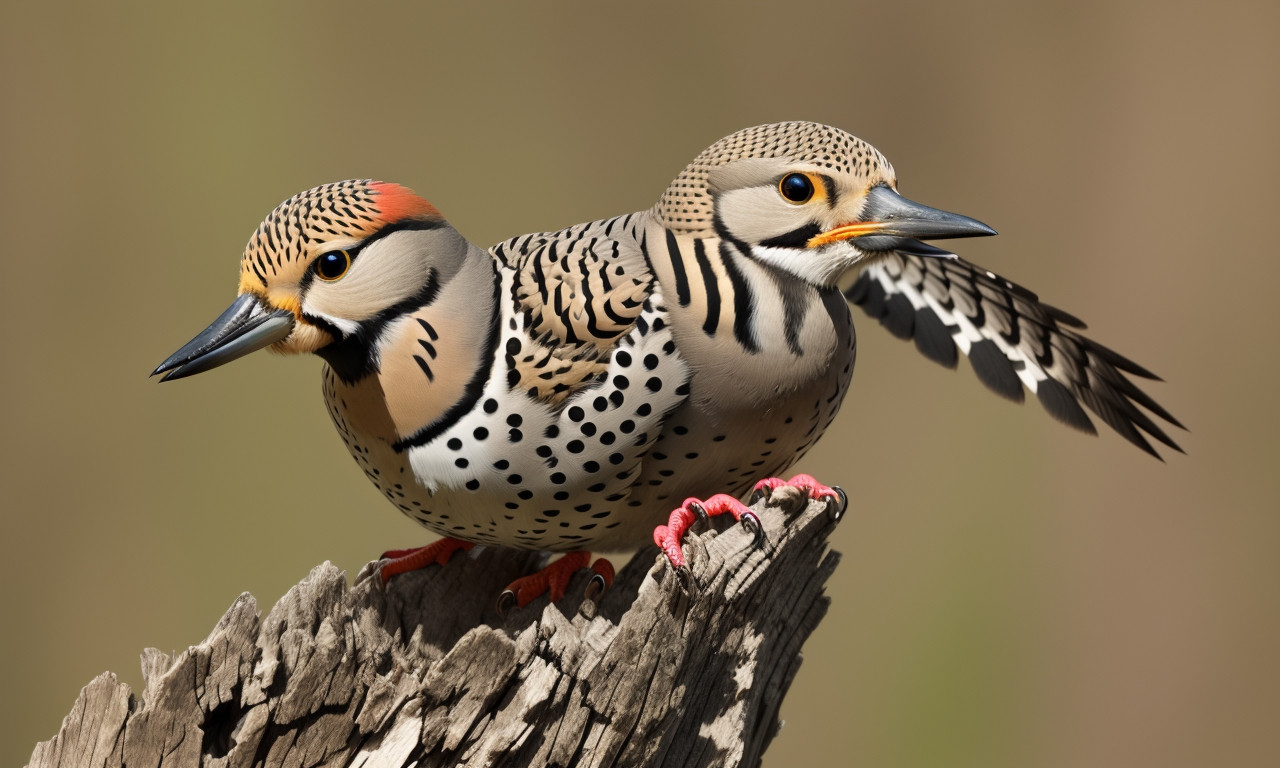
The "Top 35 Most Common Birds of Indiana – Ultimate Guide to Backyard & Wild Birds" serves as an essential resource for bird enthusiasts and casual observers alike. Among the captivating array of avian life detailed in this guide, the Northern Flicker stands out as a vibrant representative of Indiana’s feathered inhabitants. Renowned for its striking plumage and undulating flight pattern, the Northern Flicker is often spotted drumming on tree trunks as it searches for its primary diet of ants and beetles.
This medium-sized woodpecker is easily identified by its distinctive markings, including a barred black-and-buff back and a prominent white rump visible in flight. The males boast a striking red crescent on their nape, making them even more eye-catching. Observers in Indiana’s diverse ecosystems might find the Northern Flicker frequenting open woodlands, forest edges, and even suburban backyards, especially drawn to suet feeders and birdbaths.
The guide not only highlights the Northern Flicker’s visual and auditory characteristics but also provides practical tips for attracting this fascinating bird to your backyard, such as preserving dead trees and offering appropriate food sources. The comprehensive information ensures that whether you are a novice or a seasoned birder, you will find the Northern Flicker a delightful and regular visitor to observe.
Dark-eyed Junco
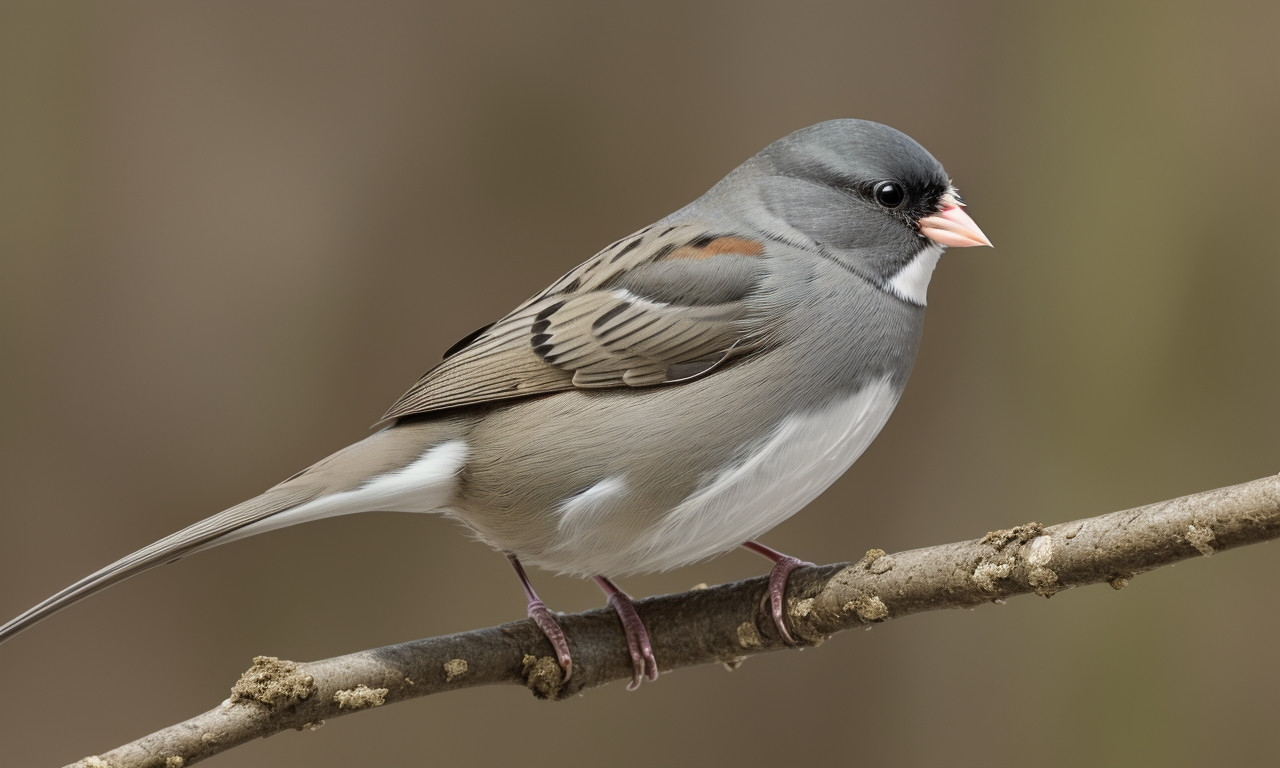
The "Top 35 Most Common Birds of Indiana – Ultimate Guide to Backyard & Wild Birds" offers an enriching journey into the avian diversity of Indiana. Among these birds, the Dark-eyed Junco is a fascinating highlight. Recognizable by its slate-gray plumage and crisp white belly, the Dark-eyed Junco is a frequent visitor to both urban backyards and wild, wooded areas. This small songbird, often called the "snowbird," tends to arrive in flocks as winter approaches, adding a lively bustle to the otherwise quiet season.
The Dark-eyed Junco is not only visually striking but also intriguing in its behaviors. Known for its characteristic hopping along the ground, it searches for seeds and insects, making it a charming sight for both novice and experienced bird watchers. The guide details their habitats, feeding preferences, and migration patterns, helping enthusiasts set up ideal environments to attract these delightful creatures. By understanding the needs and behaviors of the Dark-eyed Junco and other birds detailed in the guide, bird lovers can create inviting spaces that support these species, ensuring their presence throughout the seasons. This comprehensive guide stands as an indispensable resource for anyone keen on exploring Indiana’s rich avian tapestry.
Eastern Bluebird

Indiana is a delightful haven for bird enthusiasts, home to a variety of avian species. One notable highlight in the "Top 35 Most Common Birds of Indiana – Ultimate Guide to Backyard & Wild Birds" is the Eastern Bluebird. Renowned for its vivid blue plumage and gentle demeanor, the Eastern Bluebird is a frequent and cherished sight in Indiana’s landscapes. This small thrush, often seen perched on telephone wires or flitting near meadows, thrives in open fields and sparse woodlands adjacent to human habitation, making them a popular visitor to backyard gardens.
Eastern Bluebirds are especially known for their melodious song and insect-hunting prowess, providing natural pest control benefits. They are cavity nesters and often take advantage of birdhouses provided by residents, solidifying their status as beloved backyard companions. During the breeding season, glimpses of their intricate courtship rituals add a layer of fascination for bird watchers.
The guide delves into the characteristics, habitat preferences, and behaviors of these birds, offering tips on how to attract and support them, such as placing nesting boxes and maintaining insect populations. Observing and understanding Eastern Bluebirds enriches the experience of birdwatching in Indiana, showcasing the state’s rich biodiversity.
Great Blue Heron

Indiana boasts a diverse array of bird species, making it a haven for bird enthusiasts. The "Top 35 Most Common Birds of Indiana – Ultimate Guide to Backyard & Wild Birds" highlights these feathered residents, providing both seasoned ornithologists and casual bird watchers with insightful information. Among the impressive list, the Great Blue Heron stands out, epitomizing majestic serenity.
The Great Blue Heron, known for its large stature and striking blue-gray plumage, thrives in Indiana’s wetland habitats. This bird is a regular feature near lakes, rivers, and marshes, easily identifiable by its slow, deliberate wing beats and long neck tucked into a distinctive S-shape during flight. Observing a Great Blue Heron wading gracefully through shallow waters to spear fish or frogs is a serene experience, reflecting the rich biodiversity Indiana offers.
Our guide thoroughly explores these magnificent creatures, detailing their behaviors, nesting habits, and roles within their ecosystems, alongside other common Indiana birds. Whether you’re a backyard birder or someone who delves into wild bird habitats, understanding the habits and characteristics of the Great Blue Heron and its avian companions can deepen your appreciation for Indiana’s natural splendor. This ultimate guide serves as an essential resource for anyone keen on immersing themselves in the world of Indiana’s common birds.
Killdeer
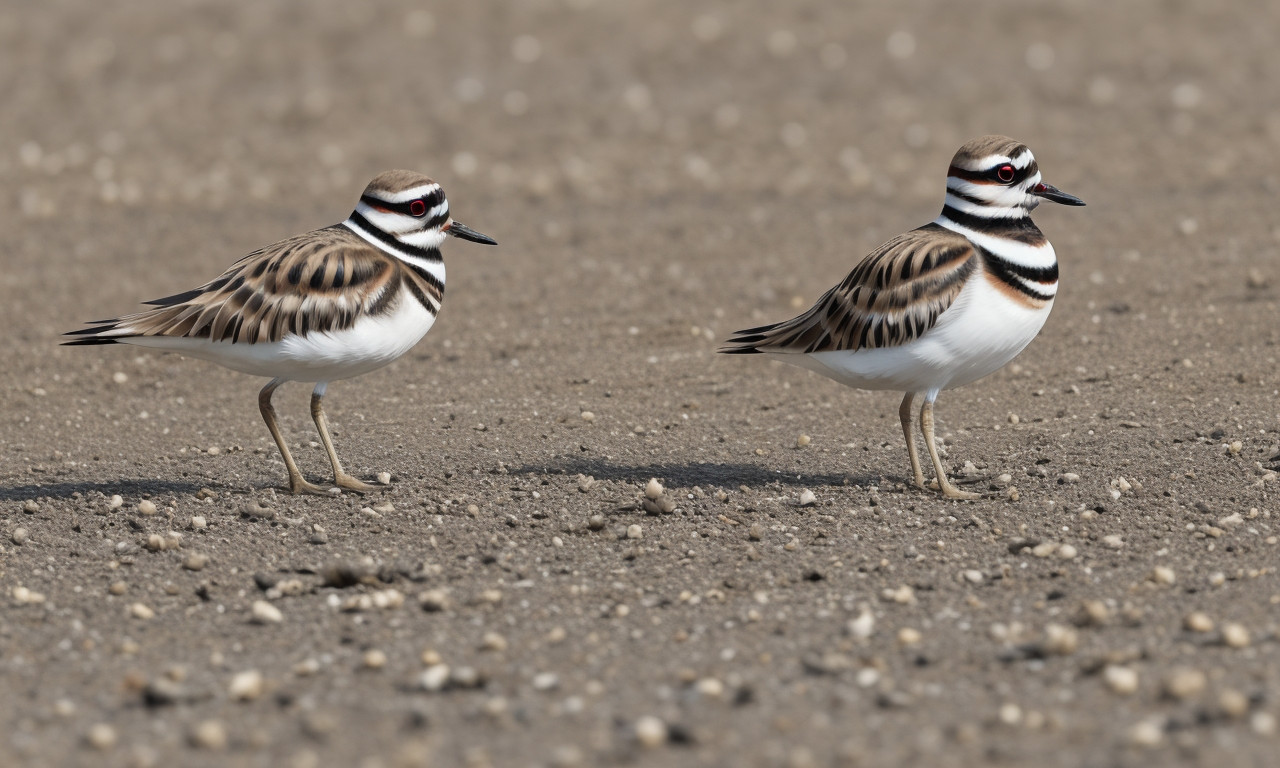
Indiana hosts a rich array of bird species, making it a bird watcher’s paradise. Among the top 35 most common birds of Indiana, the Killdeer stands out for its distinct markings and unique behavior. This medium-sized plover is easily recognizable by its two black neck bands and loud, piercing call that mimics its name. Often found in open fields, mudflats, and even golf courses, the Killdeer is not just confined to Indiana’s wild spaces but can also be frequently spotted in backyards with large, open areas.
The Killdeer is particularly interesting for its "broken wing" act, a deceptive maneuver used to lead predators away from its nest. Their nests, typically constructed directly on the ground, are simple scrapes lined with small stones. This bird’s adaptability to various habitats, from suburban lawns to agricultural fields, makes it a quintessential member of Indiana’s avian community. Observing the Killdeer offers invaluable insight into the diverse avifauna of the state.
For anyone interested in exploring the top 35 most common birds of Indiana, understanding the habits and characteristics of the Killdeer can significantly enhance bird-watching experiences. Its presence adds an intriguing layer to Indiana’s natural tapestry, showcasing the region’s ecological richness and the adaptability of its avian residents.
Gray Catbird

The ultimate guide to the "Top 35 Most Common Birds of Indiana" offers an in-depth look into both backyard and wild birds that populate the Hoosier state, highlighting unique characteristics, behaviors, and habitats. Among these fascinating avian residents, the Gray Catbird stands out with its distinctive features and intriguing habits. This medium-sized bird, named for its cat-like mew call, is a common sight in Indiana’s wooded areas, shrubberies, and suburban gardens.
Gray Catbirds are easily recognizable with their slate-gray plumage, black cap, and strikingly contrasting dark tail. These birds are not just visually appealing; they are also known for their vocal prowess. The Gray Catbird’s song comprises a mix of melodious notes and mimicry, reflecting its position as one of the most versatile songsters in Indiana’s avian community.
In terms of diet, Gray Catbirds are omnivorous, enjoying a varied menu that includes insects, berries, and fruits, making them frequent visitors to backyard feeders stocked with suitable offerings. Observing these charming birds can bring a touch of nature’s melody and beauty to any Indiana garden, enriching the birdwatching experience for both amateur and seasoned bird enthusiasts alike.
Common Grackle
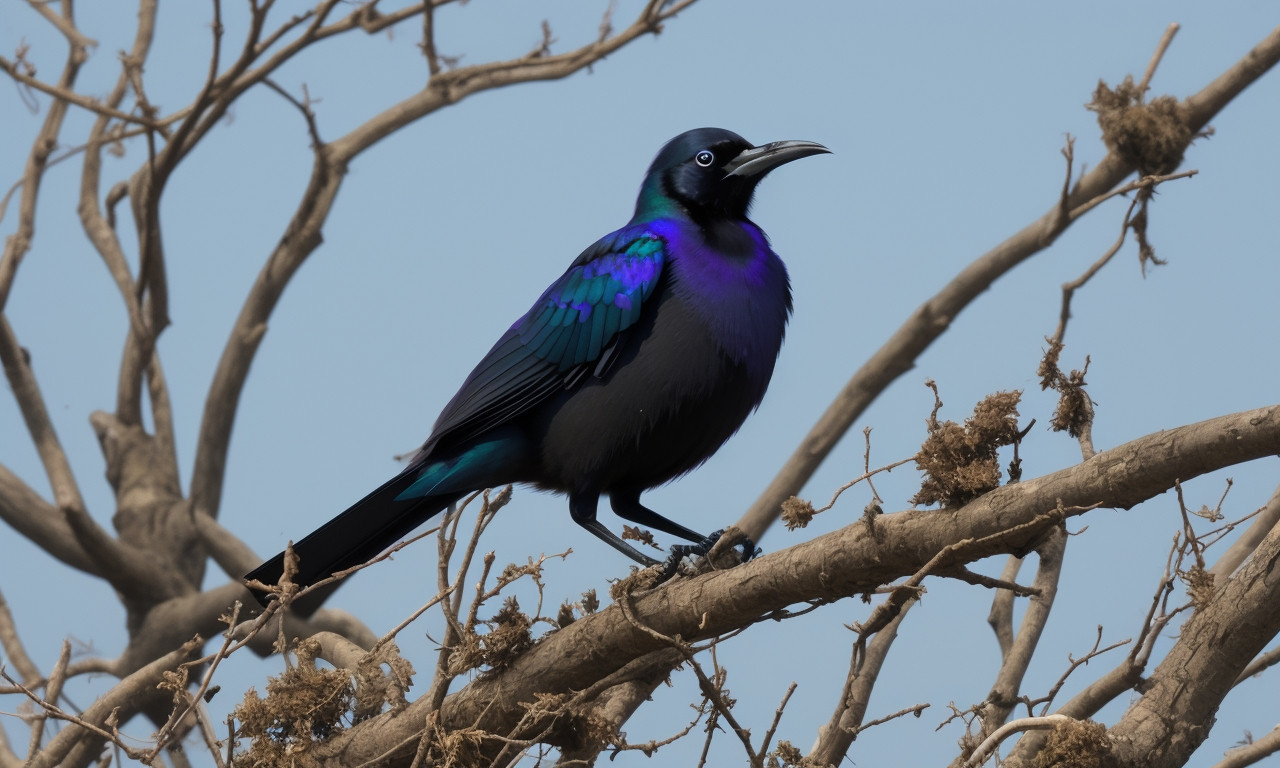
Indiana’s diverse avian population makes it a paradise for birdwatchers, offering an array of colorful and melodious species worth observing. Our "Top 35 Most Common Birds of Indiana – Ultimate Guide to Backyard & Wild Birds" highlights beloved species that grace the state. Among these birds, the Common Grackle stands out both visually and behaviorally. The Common Grackle, frequently spotted in Indiana, is easily recognizable by its iridescent black plumage that shimmers with hints of blue, green, and purple under sunlight. Its long tail and striking yellow eyes add to its distinctive appearance.
These adaptable birds can be found in a variety of habitats, from woodlands and marshes to urban centers, where they thrive on a wide diet ranging from insects and small fish to seeds and fruits. The Common Grackle plays a crucial role in the ecosystem by controlling insect populations and dispersing seeds, contributing to the rich biodiversity of Indiana. Our comprehensive guide not only includes the Common Grackle but also other fascinating species that reflect the natural beauty of Indiana’s outdoors. Whether you are a seasoned ornithologist or a curious backyard birder, learning about these common birds, including the unique Common Grackle, enriches your appreciation for Indiana’s wildlife.
Brown-headed Cowbird
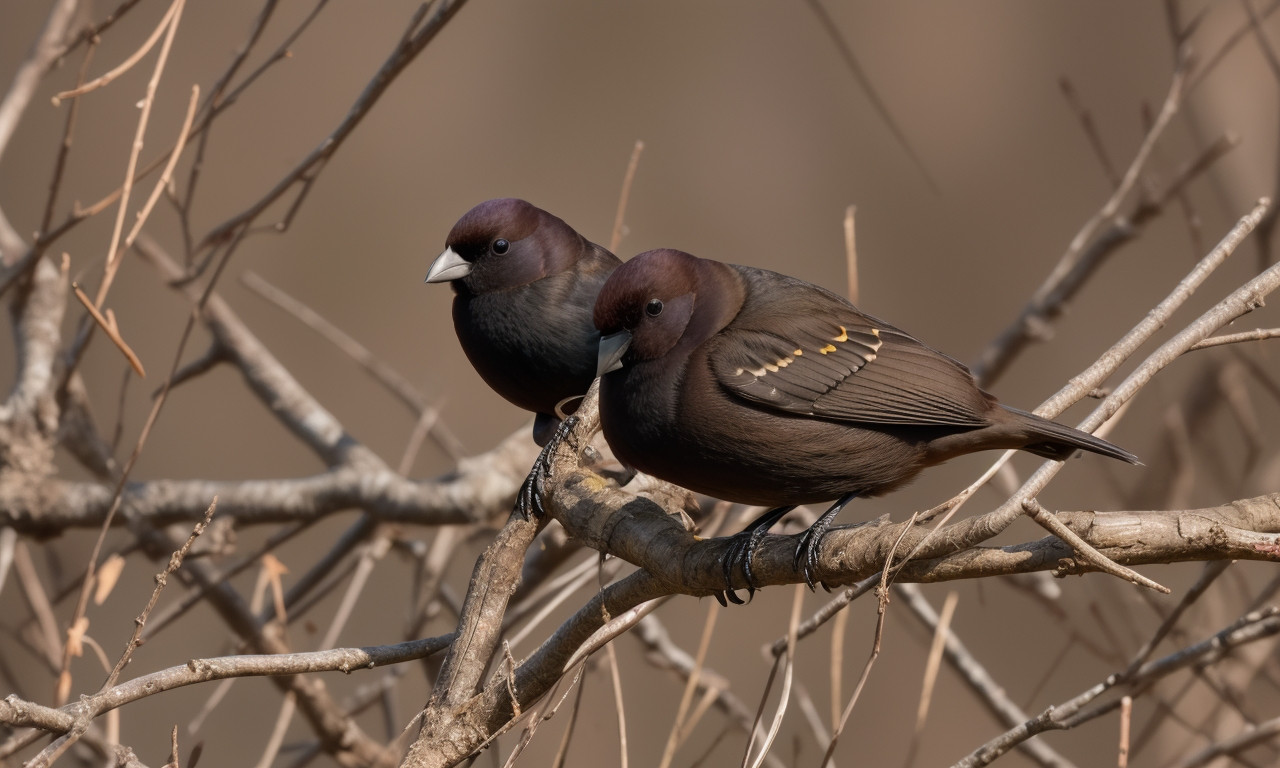
Indiana, a state rich with diverse birdlife, hosts an array of wondrous avian species. Among the Top 35 Most Common Birds of Indiana – Ultimate Guide to Backyard & Wild Birds, you’ll find the unique Brown-headed Cowbird. Known for its distinctive brown head and contrasting black body, the Brown-headed Cowbird holds a special place in Indiana’s birdwatching community. This intriguing bird is often spotted in open fields, suburban backyards, and forest edges throughout the state.
Unlike many other birds that build nests and raise their own young, the Brown-headed Cowbird is notorious for its brood parasitism. The female cleverly lays her eggs in the nests of unsuspecting host birds, leaving them to foster the cowbird chicks. This fascinating behavior can be both a marvel and a concern, as it impacts the reproductive success of other bird species.
Whether you’re in your backyard or exploring the wild landscapes of Indiana, keeping an eye out for the Brown-headed Cowbird can add an intriguing layer to your birdwatching experience. This ultimate guide doesn’t just catalog these birds but offers in-depth insights, making it an indispensable resource for both novice and seasoned bird enthusiasts. Discover the captivating world of Indiana’s avifauna and appreciate the wonders that the Brown-headed Cowbird brings to your birding adventures.
Pileated Woodpecker

Indiana is home to a diverse array of bird species, offering a haven for bird enthusiasts and wildlife photographers alike. Among the top 35 most common birds in Indiana, one standout species that captivates observers is the Pileated Woodpecker. Known for its striking red crest and large size, the Pileated Woodpecker is often considered the largest woodpecker in North America. This bird is easily recognizable by its laughter-like call and its impressive ability to chisel deep into trees to forage for insects, particularly carpenter ants.
The Pileated Woodpecker thrives in Indiana’s mature forests, where it contributes to the ecosystem by controlling insect populations and creating nesting cavities that later benefit other wildlife. Bird watchers often spot them in areas with a rich supply of deadwood, such as dense hardwood forests and wooded suburban areas. As you explore Indiana’s varied habitats—from wetlands and grasslands to dense woods—one cannot ignore the distinctive hammering sound echoing through the trees, a sure sign that a Pileated Woodpecker is nearby.
Whether you’re an avid birder or just beginning to appreciate the avian wonders of Indiana, witnessing the majestic Pileated Woodpecker in its natural habitat is an unforgettable experience. This guide ensures you’ll be equipped with the knowledge to identify and appreciate the top 35 most common birds in Indiana, including the enchanting Pileated Woodpecker.
House Wren
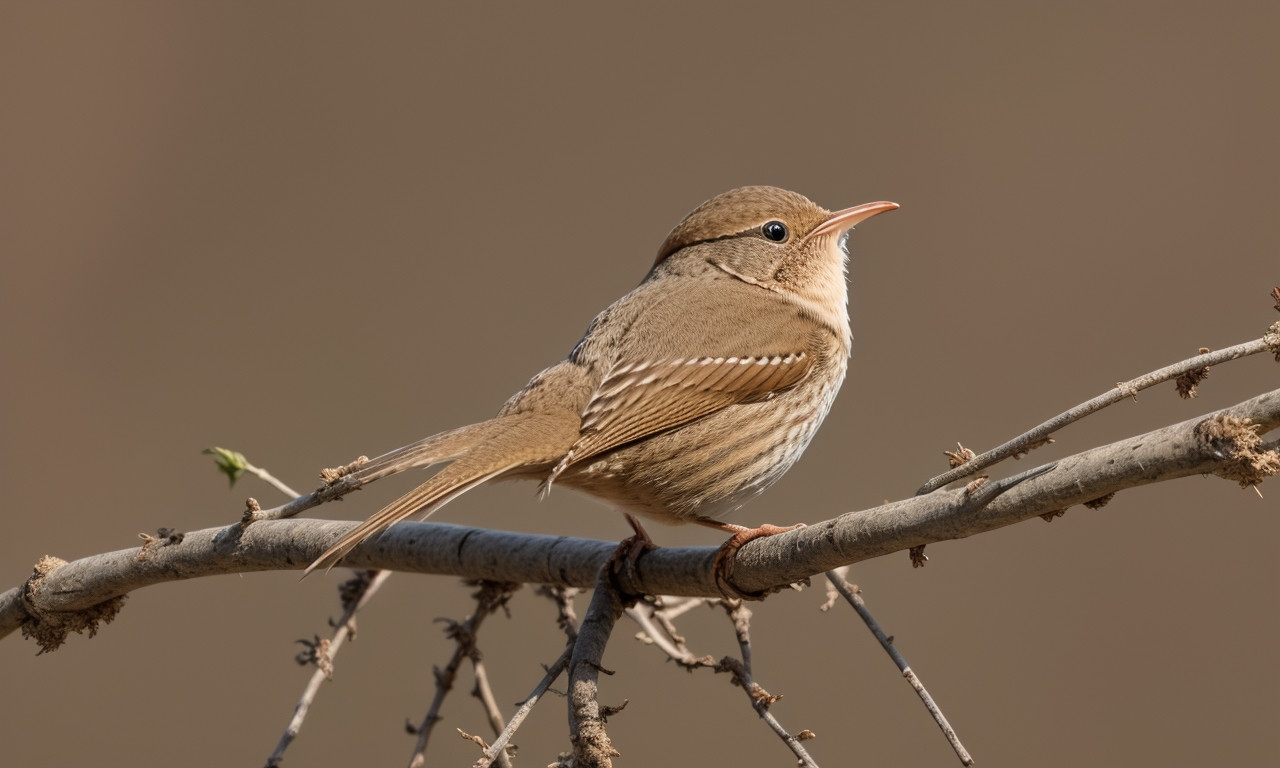
Indiana’s backyard and wild bird populations are a testament to the state’s rich biodiversity, with the House Wren among the top 35 most common birds. This perky and diminutive songbird, measuring about 4 to 5 inches in length, is a delightful presence in many Hoosier backyards. The House Wren is known for its loud and cheerful song that often fills the air from dawn to dusk. With a preference for nesting in cavities, these birds can frequently be found using birdhouses, old woodpecker holes, or even gaps in buildings.
In Indiana, the House Wren is particularly active during the breeding season, which extends from spring through late summer. Their nests are intricate constructions of twigs, feathers, and grass, often guarded by the fiercely territorial males. House Wrens play a crucial role in controlling insect populations, as their diet consists primarily of beetles, caterpillars, and spiders, making them beneficial residents for any backyard.
As part of Indiana’s diverse avian community, the House Wren exemplifies adaptability and resourcefulness. Spotting a House Wren while exploring the state’s natural beauty can be a highlight for bird enthusiasts. For those interested in attracting these lively singers to their gardens, providing safe nesting sites and a habitat rich in insects can make all the difference.
Hairy Woodpecker
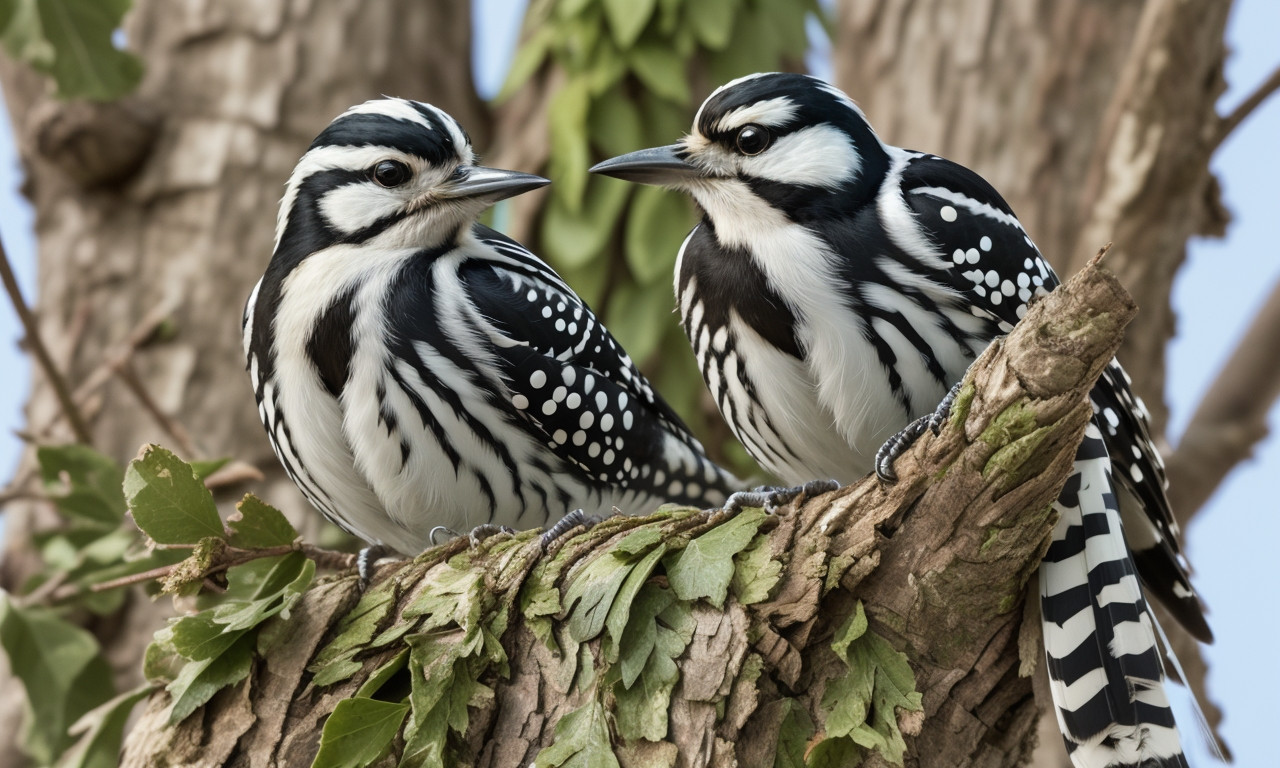
Discover the fascinating avian life of Indiana with our comprehensive guide, detailing the top 35 most common birds of the state. From your backyard to the wild, Indiana is home to a plethora of bird species, each contributing to the rich tapestry of local biodiversity. Among these, the Hairy Woodpecker stands out as a notable mention. This medium-sized woodpecker is often spotted drumming on tree trunks and branches in search of insects, its primary food source. Characterized by its black-and-white plumage, the Hairy Woodpecker also sports a distinctive red patch on the back of its head, found in males.
Venture into Indiana’s mixed forests, woodlands, and even urban parks, and you’re likely to encounter this resilient bird. Whether you’re a seasoned birdwatcher or a curious novice, observing the Hairy Woodpecker can add much excitement to your birdwatching experience. This guide aims to enhance your appreciation of Indiana’s avifauna by providing detailed insights into each species, their habits, and their habitats. So, grab your binoculars and embark on a journey through Indiana’s birdlife, where the Hairy Woodpecker and many other species await your discovery. This guide will ensure you’re well-equipped to identify and enjoy the diverse bird population that calls Indiana home.
White-throated Sparrow

Indiana’s avian diversity is a delight for both seasoned birdwatchers and casual observers, with the state’s rich landscapes providing a haven for a variety of bird species. Among these, the White-throated Sparrow stands out as a cherished visitor. Recognized by its distinctive white throat patch and vivid yellow lores, this sparrow is a common sight in Indiana’s backyards and wild areas, particularly during its migration periods.
The White-throated Sparrow is known for its lovely, melodious song, often described as a clear, whistling "Oh-sweet-canada-canada." This sound brings a charming ambiance to Indiana’s natural spaces, making birdwatching a joyous activity. Typically, you’ll find them hopping on the ground in search of seeds and insects or perched within dense shrubs and trees.
Understanding the habits and habitats of the White-throated Sparrow is essential for bird enthusiasts keen on observing Indiana’s most common birds. This sparrow thrives in forests, garden edges, and thickets, preferring areas that offer ample cover. Inclusive guides focusing on Indiana’s avian life emphasize the importance of creating a bird-friendly environment, ensuring that species like the White-throated Sparrow continue to visit and thrive.
By recognizing and welcoming the White-throated Sparrow, bird lovers contribute to the vibrant tapestry of Indiana’s bird population, enhancing both their birdwatching experience and the ecological health of their surroundings.
Red-tailed Hawk
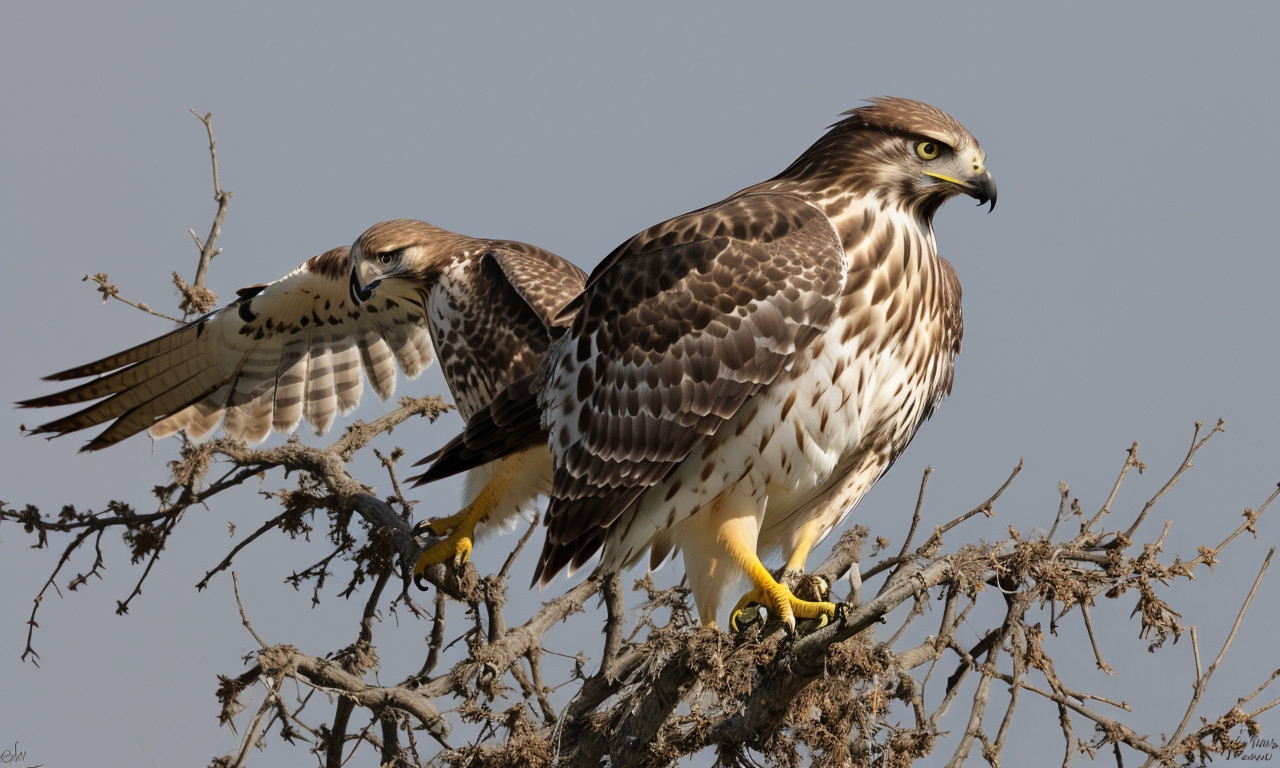
Indiana is a bird watcher’s paradise, offering an impressive array of feathered friends in both backyard and wild settings. Among the top 35 most common birds of Indiana, the Red-tailed Hawk stands out as a majestic and frequently observed species. These formidable birds of prey are easily identifiable by their reddish-brown tails and broad, rounded wings, often seen soaring high above with effortless grace.
Red-tailed Hawks are versatile hunters, frequently spotted in open fields, along highways, and perched atop trees where they scan the ground for rodents, their primary food source. Their piercing, predatory eyes and strong talons make them efficient hunters, contributing to the delicate balance of the ecosystem. Bird enthusiasts often delight in watching the Red-tailed Hawk’s impressive hunting techniques and aerial acrobatics.
In addition to the Red-tailed Hawk, Indiana’s bird-watching checklist includes beloved songbirds, vibrant woodpeckers, and aquatic birds, each adding to the state’s rich biodiversity. Observing these diverse species in their natural habitats brings a deeper appreciation for Indiana’s abundant wildlife.
Overall, the Red-tailed Hawk not only embodies the wonder of Indiana’s avian world but also plays a pivotal role in maintaining healthy ecosystems, making it a noteworthy species among Indiana’s top 35 most common birds.
Eastern Wood-Pewee
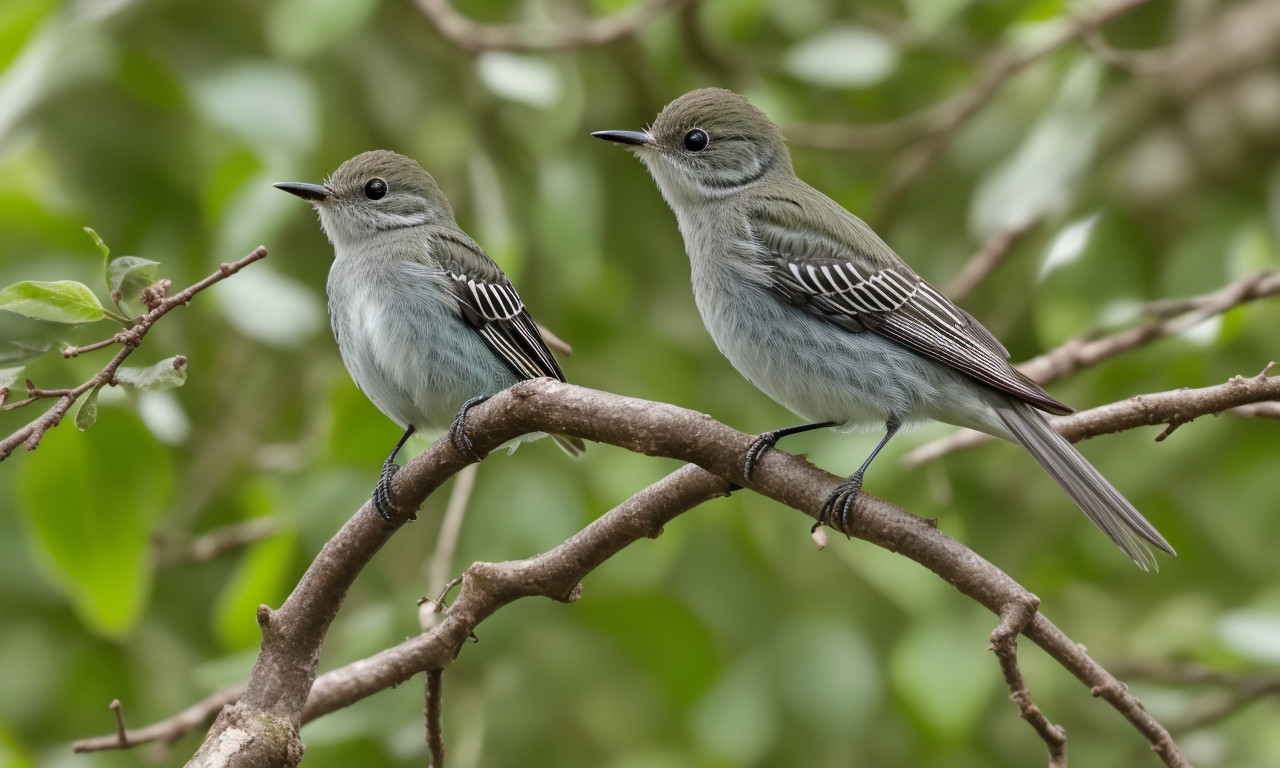
Indiana’s diverse ecosystems create a vibrant sanctuary for bird enthusiasts, and the "Top 35 Most Common Birds of Indiana – Ultimate Guide to Backyard & Wild Birds" is a comprehensive resource for any explorer. One of the captivating species highlighted in this guide is the Eastern Wood-Pewee, a small but fascinating bird known for its distinct call and seasonal migration patterns. Often found perched on tree branches, this flycatcher is easily identifiable by its olive-gray upperparts and pale underparts. In Indiana, the Eastern Wood-Pewee thrives in deciduous forests and is a frequent visitor to many backyards.
The guide offers detailed descriptions, including behaviors and habitats, essential for identifying and appreciating the Eastern Wood-Pewee and other common avian residents. For bird watchers, understanding the seasonal migratory habits of the Eastern Wood-Pewee can enrich the birding experience, providing insights into the best times and places for sightings. Whether you’re an amateur bird watcher or a seasoned ornithologist, this ultimate guide serves as an invaluable tool in exploring and appreciating Indiana’s rich birdlife. From the melodious tunes of songbirds to the majestic swoop of hunting raptors, each page is filled with fascinating facts, ensuring a deeper connection with the state’s feathered inhabitants.
Eastern Towhee
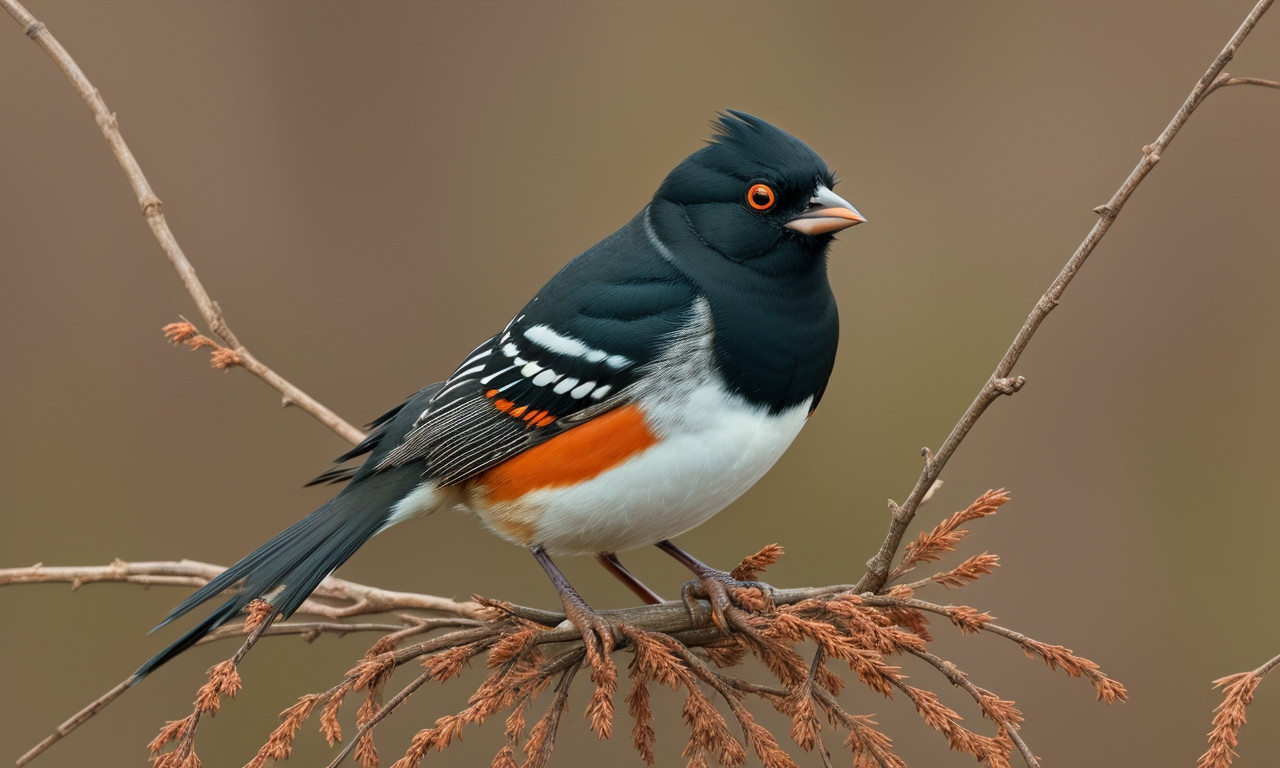
The "Top 35 Most Common Birds of Indiana – Ultimate Guide to Backyard & Wild Birds" offers an enchanting look into the avian wonders of the Hoosier State. This guide meticulously details each bird, providing bird enthusiasts with comprehensive knowledge on identification, behaviors, and habitats. Amongst these birds, the Eastern Towhee stands out with its striking appearance and distinct songs. Known for their captivating "drink-your-tea" call, Eastern Towhees are often found scratching the forest floor in search of food.
These birds showcase a remarkable blend of colors, with males displaying rich black and white plumage accented by vibrant rufous sides. Females, while slightly more subdued in color, still exhibit the distinctive features that make identifying them a joy for bird watchers. The inclusion of the Eastern Towhee in this ultimate guide is critical for both novice and experienced birders in Indiana.
Readers learn not only how to identify these intriguing birds but also gain insights into their seasonal movements and breeding habits. In essence, the guide becomes an indispensable resource for anyone looking to deepen their understanding and appreciation of Indiana’s diverse bird population, ensuring the Eastern Towhee and other avian marvels are easily recognized and enjoyed in both backyard and wild settings.
FAQ

Indiana’s diverse habitats make it a sanctuary for bird enthusiasts. The "Top 35 Most Common Birds of Indiana – Ultimate Guide to Backyard & Wild Birds" provides a comprehensive list to help spot these feathery residents. This guide covers a variety of species from the colorful Northern Cardinal to the elusive American Woodcock. Each bird description includes visual markers, dietary habits, and a summary of their preferred environments.
Whether you’re setting up feeders in your backyard or exploring Indiana’s scenic trails, this guide offers a complete FAQ section. Here, birdwatchers will find answers to common queries such as the best times of year for birdwatching, the types of birdseed preferred by different species, and how to set up a bird-friendly habitat.
Additionally, the FAQ covers vital information about bird conservation and ethical birdwatching practices. For those looking to expand their birdwatching experience, the guide lists local birdwatching groups and online resources. Exploring Indiana’s avian population has never been easier with this ultimate guide. Featuring detailed photographs and expert insights, it’s a must-have for every bird lover eager to understand and preserve the marvels of Indiana’s avifauna.
How many bird species are native to Indiana?
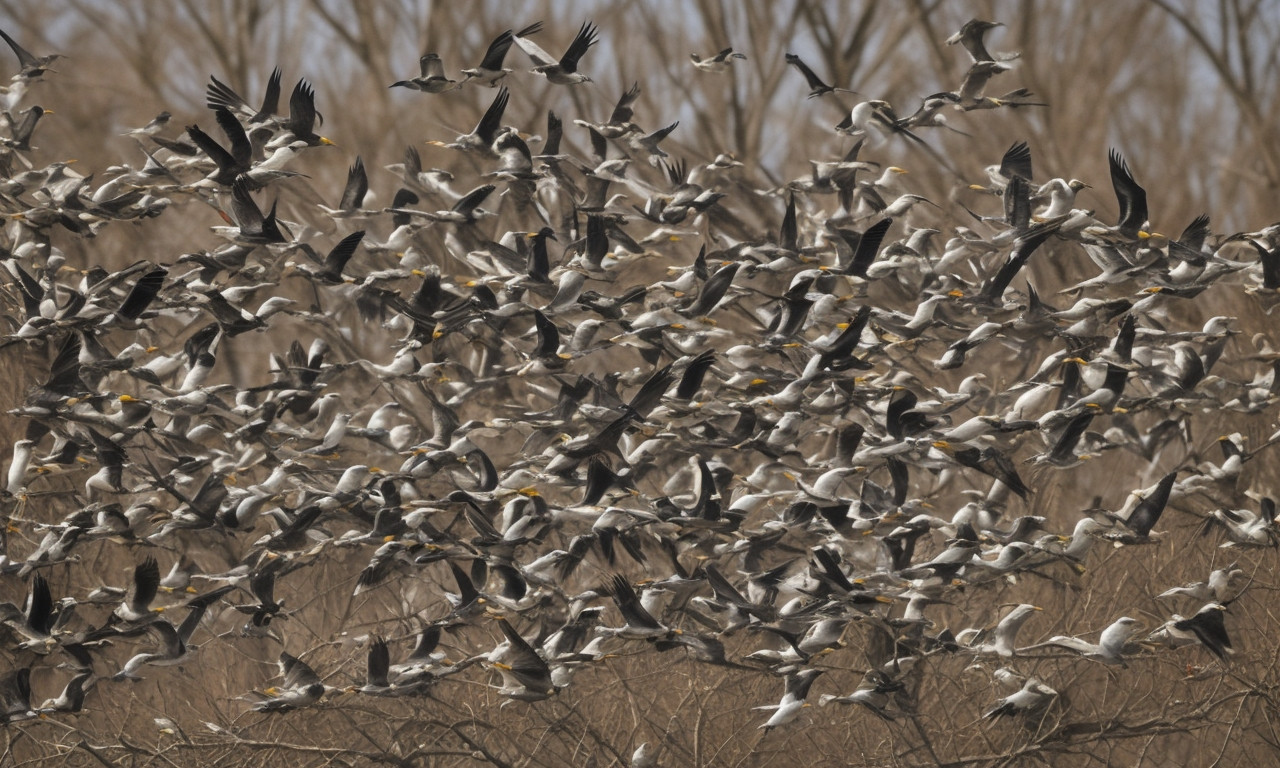
Indiana is a bird-watcher’s paradise with an impressive array of avian species that inhabit both backyards and wild landscapes. In this "Top 35 Most Common Birds of Indiana – Ultimate Guide to Backyard & Wild Birds," you’ll discover fascinating details about the state’s most frequently spotted birds, providing a comprehensive resource for enthusiasts. But one might ask, "How many bird species are native to Indiana?" The state is home to approximately 400 bird species, thanks to its diverse habitats ranging from dense forests and wetlands to charming rural areas.
Within this guide, you’ll learn about the distinct characteristics, migratory patterns, and habitats of the top 35 most common birds, including the vibrant Northern Cardinal, cheerful American Robin, and the elegant Great Blue Heron. The information not only enhances your bird-watching experience but also deepens your understanding of Indiana’s rich biodiversity. Whether you are a seasoned bird-watcher or a curious beginner, this guide will equip you with the knowledge to identify and appreciate the various bird species that call Indiana home. So, as you venture into your backyard or local parks, remember to look up and enjoy the splendor of Indiana’s avian population. Discovering "How many bird species are native to Indiana?" only adds to the excitement of your bird-watching journey.
What is the most common bird in Indiana?

Indiana’s avian diversity offers a stunning array of bird species, making it a paradise for both seasoned ornithologists and amateur bird watchers alike. Our comprehensive guide to the top 35 most common birds of Indiana serves as an essential resource for anyone wanting to delve into this feathery world. From the backyard to the wilderness, this guide highlights various species, their habitats, and behaviors.
But many ask, "What is the most common bird in Indiana?" The answer is the Northern Cardinal. Known for its vibrant red plumage and melodious song, the Northern Cardinal is a familiar sight in Indiana’s backyard feeders and wooded areas. However, other species like the American Robin, Mourning Dove, and Blue Jay also frequently grace the landscapes of Indiana, each adding unique colors and sounds to the environment.
This guide not only identifies these common species but also offers tips on how to attract and support them in your backyard. Whether you’re interested in bird behavior, identification, or conservation, our guide provides valuable insights. So, armed with binoculars and a bit of patience, you can fully appreciate the incredible bird life Indiana has to offer.
What is the largest bird in Indiana?
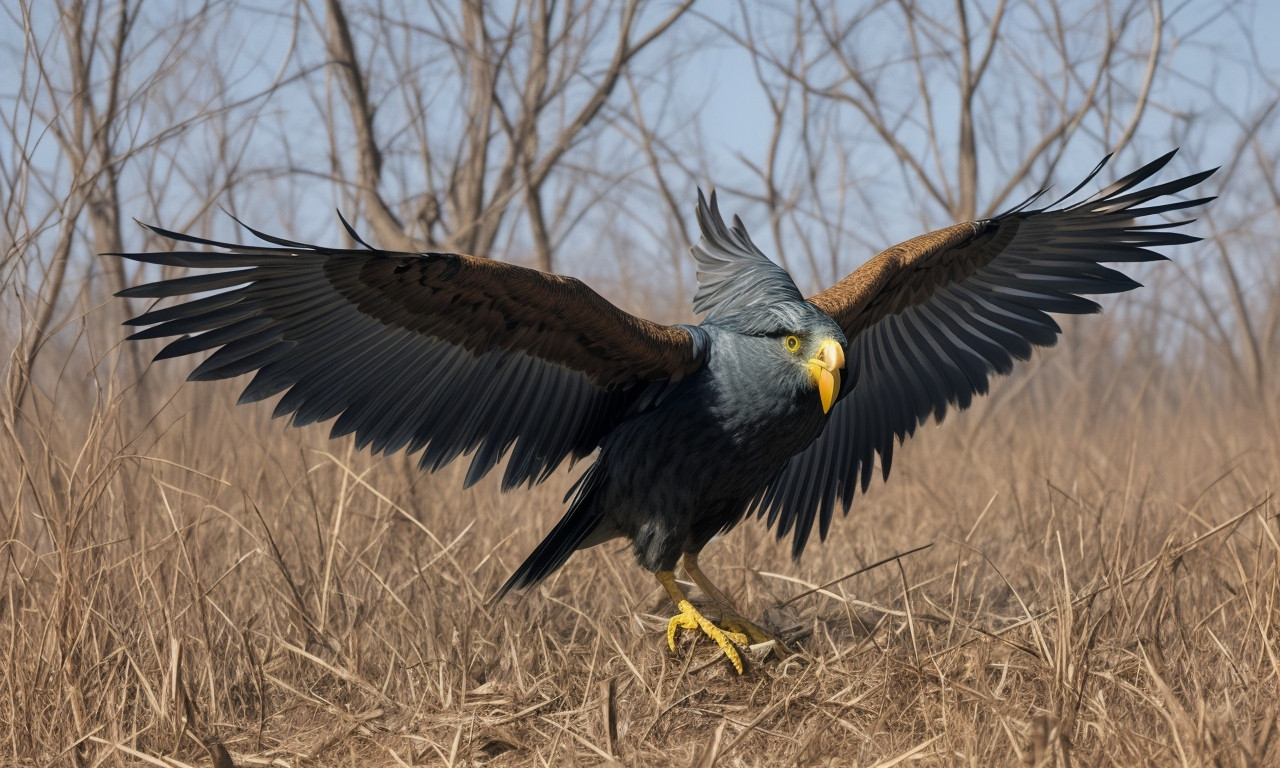
Embark on a fascinating avian journey with our "Top 35 Most Common Birds of Indiana – Ultimate Guide to Backyard & Wild Birds." Indiana’s diverse habitats provide a sanctuary for a wide array of bird species, making it a birdwatcher’s paradise. Among the vibrant feathered population, you’re bound to spot familiar faces such as the Northern Cardinal, American Robin, and the charming Eastern Bluebird. However, it’s the majestic presence of larger birds that often captures the imagination of enthusiasts.
Have you ever wondered, "What is the largest bird in Indiana?" This ultimate guide doesn’t just list the most common birds but also delves into fascinating details about them. For instance, the Sandhill Crane stands out due to its impressive stature, with a wingspan extending over six feet. Another remarkable giant, the Bald Eagle, also graces Indiana’s skies, showcasing its powerful presence and making it a true symbol of strength and freedom.
This comprehensive guide provides detailed descriptions, vibrant photographs, and essential information about each bird’s habitat, diet, and behavior. Whether you’re a seasoned birder or a curious newcomer, this guide is designed to enhance your birding experience and deepen your appreciation for Indiana’s avian wonders.
What is the smallest bird in Indiana?
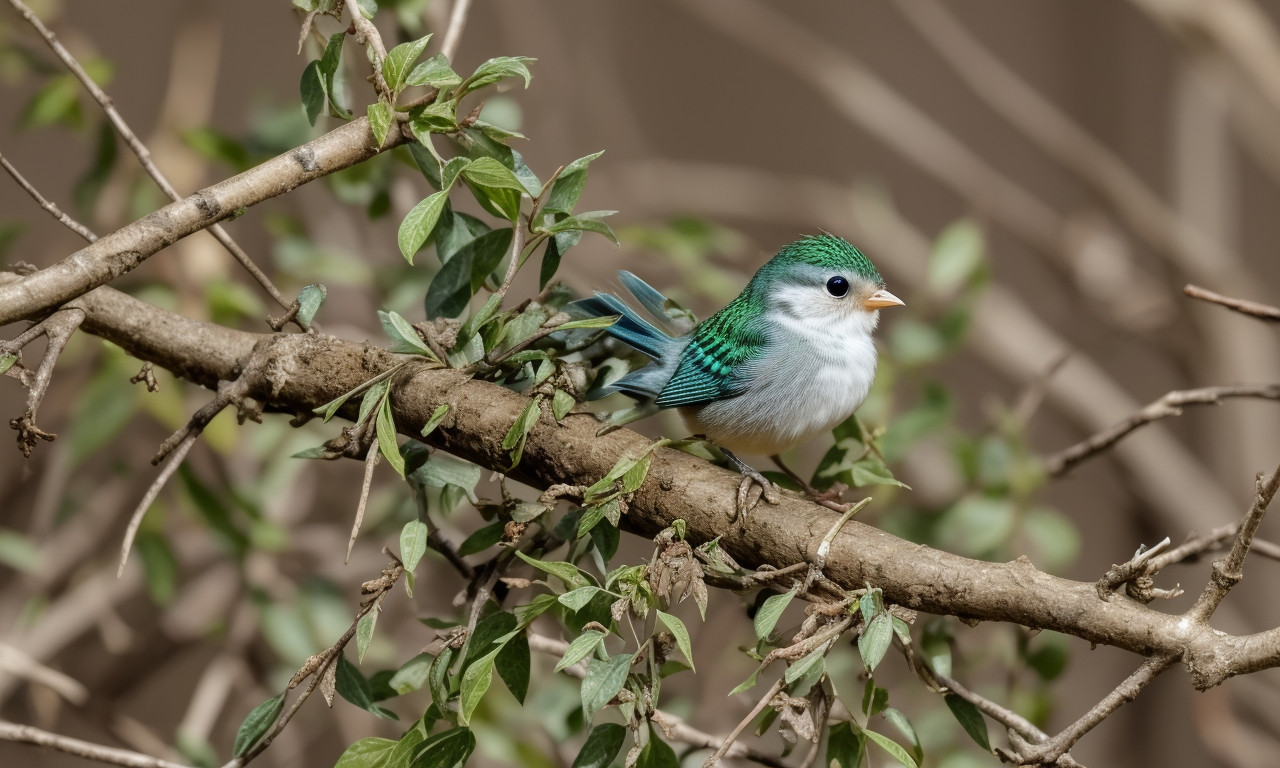
Indiana is a haven for birdwatchers, featuring a diverse array of both backyard and wild bird species. Our "Top 35 Most Common Birds of Indiana – Ultimate Guide to Backyard & Wild Birds" offers a comprehensive overview of these avian wonders. From the striking Northern Cardinal to the melodious American Robin, the guide is designed to help both novice and seasoned bird enthusiasts identify and appreciate the feathered residents of the Hoosier State.
When exploring Indiana’s avian variety, one might wonder, "What is the smallest bird in Indiana?" The answer is the Ruby-throated Hummingbird, which measures a mere 3-4 inches in length. Despite its tiny stature, this bird is known for its incredible agility and vibrant iridescent plumage. Found commonly in gardens and near feeders during the summer months, the Ruby-throated Hummingbird flits quickly from flower to flower, adding a splash of color and dynamism to any backyard.
Our guide not only highlights common birds like the American Goldfinch and Blue Jay but also provides tips on how to attract them to your yard. Whether you’re planning a birding expedition into Indiana’s rich forests and wetlands or simply enjoying the view from your window, our ultimate bird guide ensures you’ll be well-informed and ready to spot your favorite avian species.
What is the fastest bird in Indiana?
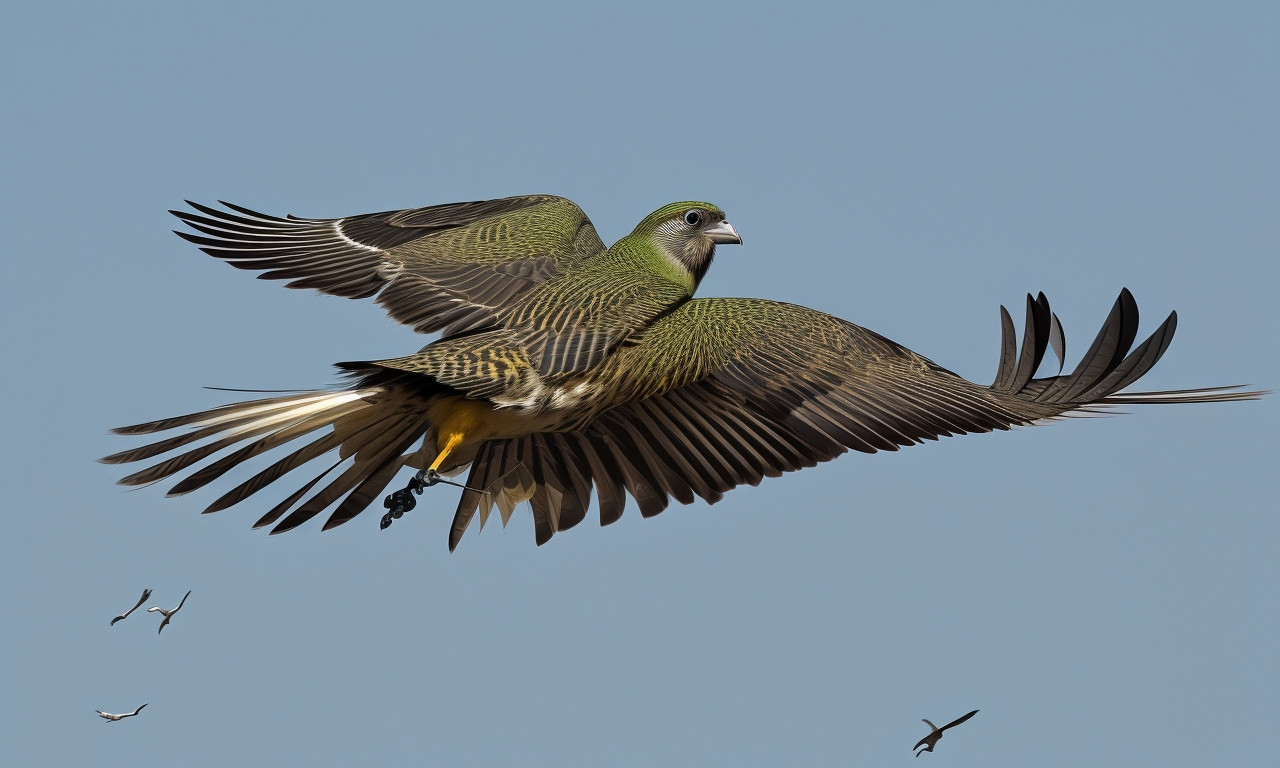
Indiana’s diverse habitats make it a haven for bird enthusiasts. From backyards to wild forests, this region hosts an impressive variety of avian species. Our "Top 35 Most Common Birds of Indiana – Ultimate Guide to Backyard & Wild Birds" offers a comprehensive look at these magnificent creatures. One intriguing question bird watchers often ponder is: What is the fastest bird in Indiana? The Peregrine Falcon holds this title, renowned for its astonishing speeds of up to 240 mph when diving, making it not only the fastest bird in Indiana but also the fastest animal on the planet.
In addition to the Peregrine Falcon, our guide features other fascinating birds like the vibrant Northern Cardinal, the melodious American Robin, and the agile Red-tailed Hawk. Each bird is spotlighted with vivid descriptions, habitat information, and tips for spotting them in the wild or attracting them to your backyard. Whether you’re a seasoned birder or a curious novice, our guide enhances your bird-watching experience by providing essential knowledge and engaging insights. Discover the beauty and diversity of Indiana’s avian life while answering compelling questions like, "What is the fastest bird in Indiana?" and many more through our expertly curated guide.




